FISH FARMING TECHNOLOGY
CASE STUDY:
Nutrition science for optimised global shrimp farming

- Dietary discrimination of organoleptic cues in gilthead seabream (Sparus aurata)
- Vaccination Advancements and scope for the application of vaccines in aquaculture
- European Union research and innovation policy for sustainable aquaculture
- WASTE TO FEED: Seaweed and algae brought to shore during decommissioning used for fish and animal feeds

International AquafeedVolume 25Issue 12December 2022 www.aquafeed.co.uk www.fishfarmingtechnology.net
DECEmbEr 2022 Proud
of Aquaculture without Frontiers UK CIO
supporter























WELCOME
The time has come to put the past year behind us and turn our attention to 2023 and beyond.
That’s a difficult ‘ask’ you might say, as we are all still being impacted by the war in Ukraine, with high energy prices, economies that are trying to adjust to higher food costs brought about-in-large by the disruption caused by the fading knock-on effect of the lockdowns associated with the Covid pandemic. And meeting climate change goals. While not over, we are settling into a routine of living with Covid and trying to manage our activities so that we avoid catching and passing on the virus.
Roger Gilbert Publisher – International Aquafeed and Fish Farming Technology

addition, we have to prove our credentials as an industry in addressing welfare, environmental impact and sustainability besides providing a range of highly nutritious products.
Without consumer support, and the family unit to value fish as a central dish for everyone to enjoy, we will have failed. That’s my hope for the New Year with all the supporting science, formulation information and technology in providing balanced rations for farmed fish following on.
In this edition
The measures taken over the past three years should give us hope and confidence that we can return to ‘normal’ in the year ahead.
That being said we have experienced an abundance of events in the second half of this year which stretched most companies and experts as we all played catch-up. As your magazine of choice, we try to attend most of the key international events but we could not manage to cover all this year.
A take away from 2022
What is our primary take away message from 2022? It must be the reliance the world is developing on the production of seafood to sustain its growing population.

We already know that the world average consumption of seafood (from aquaculture as we as from wild caught fish) is about 20.5kg/head. That’s astounding. There are 11 countries exceeding that amount (although the UK falls just short at 18.5kg per head) and that includes, at the bottom of the list, the USA on 22.13kg/capita while at the top is Iceland with 91.19kg/capita.
This is clearly showing us that the human appetite for seafood is not being quenched and as the cost of terrestrial animal production continues to rise, through increases in raw material costs that support our traditional protein sources (which includes the feeding of poultry, pork and cattle) the focus will fall more on how aquaculture can deliver.
Already Singapore, for example, is attempting to meet 30 percent of its food demand for its 5.64 million inhabitants through significant investment in aquaculture as one option. Other countries will be looking to Singapore’s Food Agency as this country rises to the challenge by co-funding schemes that will achieve their target by 2030 - or as it's project is referred to: ’30 by 30’.
A focal point for 2023
There are many areas of progress that need to be considered, but what might be the key focal point for the industry in 2023?
Looking forward it must be gaining and retaining consumer confidence in our farmed aqua products - and not just our farmed fish products either.
How does Iceland consume 90-plus kg/capita while Brazil consumes just 10 percent of that per person?
Taste, availability, ease of preparation and price all play important roles in attracting and retaining consumer support. In
Talking of sustainability Professor Nikos Zampoukas, the policy officer at the European Commission developing research and innovation policy for aquaculture, fisheries and marine biotechnology, was one of three keynote speakers at this past year's 20th International Symposium on Fish Nutrition and Feeding held in Sorrento, Italy from June 5-9, 2022. I am pleased to see his article in this edition on Page 32. We have an excellent feature from the University of Galway, Ireland on vaccination and the advances being made in controlling diseases in an every wider spectrum of farmed fish species - see Page 26.
There’s a feature on the dietary discrimination in gilthead seabream (see Page 18) and a feature on postbiotics (on Page 22). We also look at the feed resources unexpectedly found on decommissioned ocean oil and gas platforms in our Fish Farming Technology section, which can be used in farmed fish diets (see Page 40).
Please don’t overlook our Technology Showcase (see Page 42-43) which may inspire you to adopt newer technologies to make life easier while improving productivity. Our cover picture highlights our feature on Page 44 focused on ‘Nutrition Science for Optimised Global Shrimp Farming.’ Author François Jégou, the aquaculture technical manager for ADM Animal Nutrition, sees a clear opportunity for shrimp aquaculture as the world’s population passes the eight billion mark as we go to press.
I am also pleased to see our report from AquaFarm 2022 published in this edition with a promotion for its February 2023 event. This key Italian event is annual and is now back to its regular scheduled dates and is well worth the visit. Also in of Event’s section we report on Ecuador’s Aqua Expo 2022, held in October 2022, and a look towards AquaNor 2023 through the eyes of the Scottish Team. We highlight WAS events in this edition highlighting what is coming up in the New Year. Our full report on World Aquaculture Singapore 2022 - held this month - will be in our January 2023 edition. Finally, we have re-published an interview with Professor Addison Lawrence, first published in IAF in February 2018, which is in recognition of the significant contribution he made to the fish farming industry and to shrimp farming in particular during his lifetime’s work. He passed away on October 14, 2022. We will remember him. Enjoy this issue and from the team here at International Aquafeed we wish you a Merry Christmas and a Prosperous New Year ahead.
www.aquafeed.co.uk
Aquaculture is a global industry and knowledge of fish and shrimp nutritional requirements are vitally important in high quality precision diets meeting optimum growth and feed efficiency as well as cost effective intensive rearing.





There is however a move towards integrated aquaculture such in aquaponics and closed systems. Recently I have had discussions with a group based in the state of Texas, United States. I advise Skillicorn Technologies in several aspects and their novel STL’s 3-Dome system using a rotating, continuous train aquaponics facility. This method serves to integrate production of vegetables, herbs, vine-fruit and Lemnaceae (Duckweed) with the system’s core aquaculture of whitefish and giant prawns. STL Lemnaceae farming can produce greater quantities of protein, starch, minerals, and vitamins than most conventional, intensively irrigated terrestrial farming system located in favourable tropical and subtropical latitudes – while using less water (<5 percent as much). This can notably be done in the harshest desert conditions featuring completely unfavourable soil and landscapes. We will return to Duckweed and its high merit in nutritional terms in a later issue next year of International Aquafeed.
Seeing students deservedly obtaining their hard-earned PhD, I am delighted to share the great news that my first co-supervised student in Pakistan, Sadia Nazir has successfully defended her doctoral thesis this month, she has also published three scientific papers from her thesis. As her co-advisor of studies, I have been invited to attend a meeting in Lahore in February 2023 and will give a key-note presentation at the major conference being held under the auspices of the University of Veterinary and Animal Sciences, Lahore. I am indebted to my esteemed colleague and friend Dr Noor Khan for his kind invitation to Pakistan and my first visit to this Commonwealth country.
Finality the year ends, and we look forward to seasonal cheer for Christmas and the New Year of 2023. I hope we have a more peaceful year ahead and that we can achieve economic stability and that we all appreciate the small size of planet Earth. We must learn to live together and share our precious resources wisely including our ability to produce viable sustainable foods from the terrain to our rivers, coasts, and oceans.
Wishing all our readership a joyous Christmas holiday celebration and happy New Year.

Read International Aquafeed in print, online, and now on your mobile device
4 | December 2022 - International Aquafeed
Professor Simon Davies Nutrition Editor, International Aquafeed
FISH FARMING TECHNOLOGY
I am tired of hearing about the war. Or wars in general. There are many. Wars have dominated our lives since the last world war came to an end. I have no idea how many wars there have been in my lifetime. Far too many, I suppose.

But in every war, there are technological advances beyond our belief. Aviation would probably not as developed as today if it were not for the two world wars. And rocket technology has made serious advances. Guidance systems have probably improved our computer technology. These technological advances often translate into very useful tools for more peaceful, commercial activities. One development I have noticed over the past few years, is the proliferation of drones. Drones are relatively harmless to use, and I used to regard them as an interesting toy for my grandchildren. But recent wars have changed my outlook on drones. They give access to areas that are dangerous or difficult to get to. From the war in Ukraine, we have heard about the prolific use of drones practically every day. Drones as deadly weapons.
Hempel The Nor-Fishing Foundation
Zimbabwe. In order to inspect and repair the nets of their floating cages on the lake, they instead had to dive outside and inside the cages. In waters infested with crocodiles and sharp-toothed tiger fish this was pretty dangerous work, if you ask me.
Drones in aquaculture have a number of different applications. Several applications are already on the market. Such as sensor drones for monitoring the environmental conditions, like oxygen, salinity, temperature and light.
Drones can also stay operational for many hours before the battery is dead. One such drone, named “Nammu” and produced by a company called Aquaii, can operate for up to nine hours, and it can track fish over great distances.
Some use drones to monitor pollutants, too. With the criticism raised against floating cage farming – that there are loads of excrement and surplus feed amassing under the cage, this can be properly monitored with drones, cheaper and safer than with divers.

But what are drones? According to one definition I found in internet, they are unmanned vehicles. Originally, we talked about unmanned aerial vehicles (UAV) because they were mostly operated in the air. For military purposes, the areal drones are still the most important. But recently, a number of underwater drones have appeared and are gaining foothold in the aquaculture and fisheries industry, too. The term AUV has popped up in this connection: Autonomous Underwater Vehicles. Their use is now exploding. Research institutes are currently working on finding new uses for drones in aquaculture. The Institute of Marine Research in Bergen, Norway, is for example using a number of different types of drones, - areal drones, surface drones and underwater drones.
Three years ago, I witnessed the presentation of underwater drones at the Aqua Nor exhibition in Trondheim, Norway. It was a simple-looking contraption, with a camera linked to a screen so you could see what was under the water surface. I thought that this would have been a beautiful tool to have for my friends at the Lake Harvest tilapia farm on Lake Kariba in
But not only underwater drones can be of use to the fish farmer. Even areal drones have their uses. For example, areal drones can be used to monitor structural changes in the floating cages and moorings. By using this technology, the farmer can discover material weaknesses or deformations at an early stage and thus prevent breakdowns and escapes. The use of drones must also be seen in light of the continuously stricter regulations and requirements with regard to documentation. The authorities are getting more and more demanding about monitoring and documenting structural problems in installations in order to prevent escapes. The price of drones is on the way down, according to reports. That is good news for the farmer. Although big modern fish farms can cost a fortune in investments to start with, investin g in drones could add serious costs. In high-cost countries like Norway, it does not take much to compete with high labour costs, though.
So it seems we should welcome technological developments even if they come from a war. These developments tend to have a long-term effect on our lives, too. The US space programme and the moon landing brought technological innovations that have spurred further developments for half a century.

March 7th, 2023 Part of VIV Asia, Bangkok https://aqfeed.info/e/1702 CONFERENCE
International Aquafeed - December 2022 | 5
Erik
Perendale Publishers Ltd
7 St George’s Terrace
St James’ Square, Cheltenham, Glos, GL50 3PT, United Kingdom
Tel: +44 1242 267700
Publisher Roger Gilbert rogerg@perendale.co.uk
Managing Editor
Joy (Jyothsna) Nelloolichalil joyn@perendale.co.uk
International
Editors
Dr Kangsen Mai (Chinese edition) mai@perendale.com
Prof Antonio Garza (Spanish edition) antoniog@perendale.com Erik Hempel (Norwegian edition) erikh@perendale.com
Editorial Advisory Panel
• Prof Dr Abdel-Fattah M. El-Sayed
• Dr Allen Wu
• Prof António Gouveia
• Prof Charles Bai
• Dr Daniel Merrifield
• Dr Dominique Bureau
• Dr Elizabeth Sweetman
• Dr Kim Jauncey
• Dr Eric De Muylder
• Dr Pedro Encarnação
• Dr Mohammad R Hasan
Editorial team
Prof Simon Davies sjdaquafeed@gmail.com
Shannon Parsons shannonp@perendale.co.uk Niamh Cassidy niamhc@perendale.co.uk
International Marketing Team
Darren Parris
Tel: +44 7854 436407 darrenp@perendale.co.uk
Latin America Marketing Team
Clarissa Garza de Yta Tel: +52 669 120 0140 clarissag@perendale.com
Cristina María Roldán Otero Tel: +44 1242 267700 cristinaperendale@gmail.com
Egyptian Marketing Team
Mohamed Baromh
Tel: +20 100 358 3839 mohamedb@perendale.com
India Marketing Team Dr T.D. Babu +91 9884114721 tdbabu@aquafeed.org
Asia Marketing Team
Dante Feng Tel: +886 0227930286 dantef@perendale.com
Nigeria Marketing Team
Nathan Nwosu
Tel: +234 8132 478092 nathann@perendale.com
Digital community manager

Levana Hall
levanah@perendale.co.uk
Design Manager
James Taylor jamest@perendale.co.uk
Circulation & Events Manager


Tuti Tan Tel: +44 1242 267706 tutit@perendale.co.uk
Development Manager Antoine Tanguy antoinet@perendale.co.uk
IN THIS ISSUE
FISH FARMING TECHNOLOGY
REGULAR ITEMS 8 Industry News
The Aquaculture case study

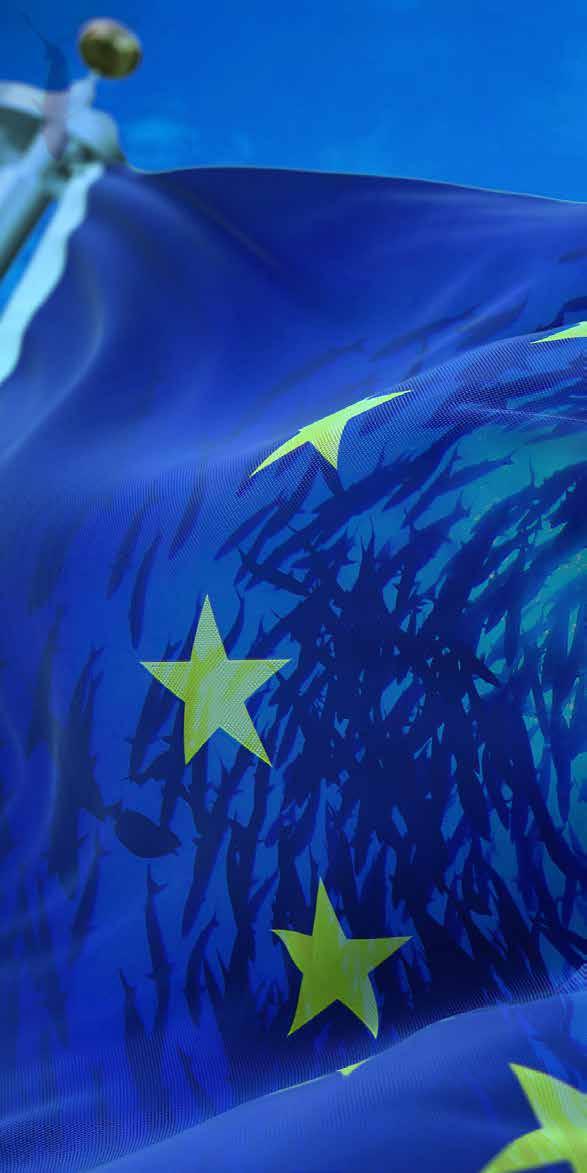
COLUMNS
©Copyright 2020 Perendale Publishers Ltd. All rights reserved. No part of this publication may be reproduced in any form or by any means without prior permission of the copyright owner. More information can be found at www.perendale.com ISSN 1464-0058
3 Roger Gilbert 4 Professor Simon Davies 5 Erik Hempel 66 Industry Faces 64 The Aquafeed Interview 60 The Market Place 12 Brett Glencross December 2022 Volume 25 Issue 12 48 Industry Events 42 Technology showcase 44 Nutrition science for optimised global shrimp farming

THE BIG PICTURE FEATURES European Union research and innovation policy for sustainable aquaculture See more on page 32 FISH FARMING TECHNOLOGY 40 WASTE TO FEED: Seaweed and algae brought to shore during decommissioning used for fish and animal feeds 18 Dietary discrimination of organoleptic cues in gilthead seabream (Sparus aurata) 22 Pioneering in Postbiotics 26 Vaccination Advancements and scope for the application of vaccines in aquaculture 32 European Union research and innovation policy for sustainable aquaculture 36 Calci-worms: An alternative source of nutrients for aquatic pets
New salmon pen concept launched to combat sea lice
Northern Lights Salmon and Sørrollnesfisk are launching together with AKVA group Egersund Net and Framo OptiCage, a new pen concept against salmon lice.
“We have adopted a special net from AKVA group Egersund Net on the pens. With a spaghetti net with a custom-made lice skirt, where the skirt is attached both at the top and bottom of the net, we can go down to a full 15 metres with a lice skirt without experiencing too much deformation,” says Christian Balteskard, Project Manager for Northern Lights Salmon and Sørrollnesfisk.
The battle against lice preoccupies most people in the fish farming industry. For the first time, the lice skirts can be lowered to 15 metres to block the lice out, while pumps bring up fresh, oxygen-rich seawater from the depths.

Utilises existing infrastructure
“It is important to look for solutions that are close at hand, and to utilise existing infrastructure for sustainable results. We have looked at how we can make "simple" changes to adapt and optimise the conditions for the fish. In OptiCage, we have assembled the most optimal solution,” says Mr Balteskard.
In the development, the fish farmers together with AKVA group Egersund Net and Framo have looked at how experience and expertise with almost standard products can be used to optimise pen conditions. The testing of the technology is supported by Innovation Norway’s Environmental Technology Scheme.
“The project started in October 2021 and was completed in March 2022. This is an exciting product that means a lot to the concept of deep farming. OptiCage is helping to combat the biggest challenge the fishing industry faces, namely salmon lice. When fresh water is constantly pumped in, this gives the salmon better fish health and reduces mortality,” says Senior Sales Manager Net Products, Geir Kåre Tønnessen, in AKVA group Egersund Net.
Deeper conditions
OptiCage is to be used in six 160-metre pens from NOFI at the Ystevika site in Sør-Troms, Norway. There are already salmon in the first four, and the start-up has been very successful.


The goal of OptiCage is to use existing equipment to create a concept against salmon lice that can be used at many of today”s food fish locations. In the design phase, much of the focus has been on finding practical solutions to ensure simple assembly and safe operation. In addition to protecting against salmon lice, the salmon must have good growth and living conditions throughout the cage. 98-minute change of seawater
Framo has used 50 years of pumping expertise from shipping and offshore to help produce sustainable salmon. Together with fish farmers, Framo has worked purposefully to optimise the flow conditions. The powerful water improver Framo AquaStream retrieves fresh seawater at the right temperature from deep below the lice belt. Within 98 minutes, Framo AquaStream has replaced all the water inside the skirt in the pens.
“We have adapted our Framo AquaStream system to verify the technology together with the form-fitting skirt. After successful installation and commissioning, the facility is now in operation with great success,” says Sales Manager Terje Ljones at Framo Innovation.
This ensures that the fish constantly get oxygen-rich water.“The pumps from Framo create currents in the pen which help to recreate the natural conditions the fish experience out in the sea. The pumps can be run up and down in capacity, and the amount of water moved can thus be adapted to the biomass that is in the pen at any given time,” says Mr Ljones.
8 | December 2022 - International Aquafeed News


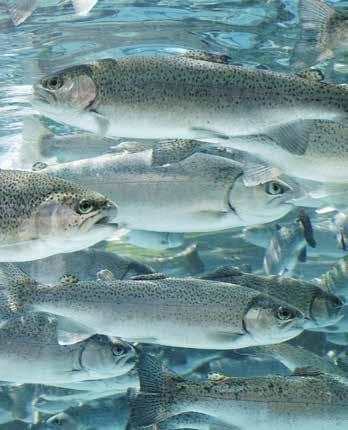


Course held In-Person & Live-Online Via Zoom Course Dates: 1/30 - 2/3, 2023 Early Bird Registration Rates: $1,495.00 In-person | $995.00 live-online Early Bird rates end 1/8/2023 32nd Annual Short Course: Feeds and Pet Food Extrusion This live-online course offers an extensive look into the principles and characteristics of feed processing, as well as support systems for effective processing 4 5-day short course with leading instructors from around the world Participants completing the course will be awarded a Certificate and are eligible for 30 Professional Development Hours (PDHs). Ready to Register? Click HERE Want to see more about onsite course activities? Click the icon here! This course brought to you by: Questions? Contact Dr. Mian Riaz Jefo Protease The solution to REDUCE FEED COSTS Increases Protein Digestibility Enhances Intestinal Health Promotes Environmental Sustainability Contact our Aquaculture Specialists info@jefo.com International Aquafeed - December 2022 | 9 News










































Cargill enter into a joint venture to increase production capacity in Ecuador’s shrimp feed market






Cargill, together with its partner Naturisa S.A., have reached an agreement to partner with Skyvest EC Holding S.A. to create a new joint venture that will serve Ecuadorian shrimp farmers' increasing demand for high-quality shrimp feed.
Cargill first brought its world-class nutrition formulation expertise to Ecuador in 2015 when it partnered with shrimp-farming company Naturisa to build and operate a shrimp-feed manufacturing facility under the name ‘Aquacargill del Ecuador’.
“Since that time, the Ecuadorian shrimp farming industry has continued to grow, and there is a need to meet the increased demand for high-quality feed,” says Helene ZivDouki, President of Cargill's aqua nutrition business.
Through this new joint venture with Skyvest, Cargill will expand its shrimp-feed production capabilities to


own and operate the shrimp-feed production facility currently owned by Skyvest subsidiary Empagran— located in Guayaquil, Ecuador. The feed plant that will be operated by Cargill was built in 2018, has a production capacity of 156,000 metric tonnes, and employs more than 200 people.
“Through this joint venture, Cargill will nearly double its production capacity, and we will improve our capacity to serve our customers and partners. We will invest in this facility and expand our offering of shrimp feeds under the Cargill's Aquaxcel brand to meet increasing demand for feed among our customers,” says Angel Gomez, Managing Director of Cargill's aqua nutrition business in northern Latin America.
“Our joint venture with Cargill has been a big success and a driver of growth for both organisations. We have established an excellent working relationship and we are excited to participate in this expansion to increase our production capacity of high-performance feed that will continue supporting the growth of the Ecuadorian shrimp industry,” says Francisco Sola, Naturisa President.
“We are excited that Cargill will bring its operational expertise and its deep knowledge of global supply chains and risk management to run this facility,” says Victor Ernesto Estrada Santistevan, owner of Skyvest.

“The Cargill know-how will improve feed quality, and their willingness to invest in the plant will bring more high-quality feed to the market.” says Mr Estrada.
The transaction, which is subject to regulatory approvals, is expected to close in the coming months.





















Leaders in Microwave
Hydro-Probe XT Hoppers, chutes, belt conveyors Hydro-Mix XT Mixers, conveyors, Ducting System Hydro-Mix XT-EX Certified for use in ATEX, IECEx and NEC/CSA Hazardous Locations (Dust) Hydro-Mix HT Mixers, conveyors, Ducting System, High Temperature enquiries@hydronix.com www.hydronix.com Contact us for more details Hydronix-Aquafeed-Advert Jan 2022 215x140mm.indd 1 20/12/2021 19:02
World
Moisture Measurement
International Aquafeed - December 2022 | 11 News
what happened to aquaculture “driving further exploitation”?
Brett Glencross

Where
with the sustainability of fishmeal fisheries?

One of the criticisms we often hear about fishmeal and their underpinning fisheries is that they are “unsustainable” and that “the growth of aquaculture is driving further exploitation of fisheries”. But how true is this, what does the data say, and importantly what do the fisheries NGOs say about all this?
Let us start with addressing the second point first. If aquaculture was driving further exploitation of fisheries, then with the growth of aquaculture over the past twenty years from using feed of around 13 MTonnes in the year 2000 to the year 2020 when it used over 52 MTonnes, we should have seen a four-fold increase in the use of fishmeal. But we didn’t, in fact fishmeal use by aquaculture only increased from 3 MTonnes in 2000, to 4.1 MTonnes in 2020. If we look at the production statistics of global fishmeal, we can clearly see over the period from 1980 to 2020, the volume produced stayed the same at about 5 million tonnes per annum. There was a period where it increased to around 7 million tonnes in the early 1990’s before the introduction of widespread fisheries management programs across most of the major fisheries resulted in stabilising volumes at around 5 million tonnes per annum from about 2005 onwards, where production has largely remained. So,
Although fishmeal use by the aquaculture sector between 2000 and 2020 increased from 3 MTonnes to 4.1 MTonnes, this meant that the proportional inclusion across the sector went from 23 percent down to 8 percent. So clearly the big proportion (over 90 percent of it in fact) of aquafeeds in the present day is not marine ingredients, and the sector has learnt to use a much broader range of ingredients. The other part of the answer is that the less (feed) efficient animal production sectors of pigs and poultry were unable to compete for the use of fishmeal, so the resource was diverted to aquaculture, which allows a much more efficient transfer of those marine nutrients in fishmeal into our food chain. Arguably a positive outcome from the use of the same volume of fishmeal. But what of that first question about those fisheries being used to sustain that production of 5 MTonnes of fishmeal each year? Well firstly, in 2020 we need to note that about 30 percent of global fishmeal production now comes from by-products from fish caught or grown for direct human consumption (DHC), something I’ve discussed in earlier editorials. So that means only 3.5 MTonnes of fishmeal presently comes from forage (reduction) fisheries. Using the industry standard yield of 22.5 percent, that means about 15 MTonnes of fish is harvested each year to produce that fishmeal. From that 15 MTonnes, a review of the FishSource Scores data on reduction fisheries from the eNGO Sustainable Fisheries Partnership’s (SFP) website, shows that the 24 main global stocks used for reduction purposes in 2019 accounted for about 10 MTonnes of harvested fish. Of those fisheries, more than 79 percent of the volume was deemed to have come from well managed fisheries. But of the other 21 percent of that 10 MTonnes, notably the loss of the MSC certification from the north Atlantic Blue Whiting fishery meant that this could have been 94 percent had there been agreement amongst the relevant coastal states on quotas. So, from a fisheries management perspective, the sustainability score looks reasonable, but could certainly be better. Alas as can be seen from the Blue Whiting situation, often this a political issue, not so much a fisheries issue. Now only if we could manage politicians as (comparatively) easily as we do fisheries…
This month on IAF
He

are we
Dr Brett Glencross is the Technical Director of IFFO - The Marine Ingredients Organisation. Over the past 25 years he has worked in various academic, institutional, and industrial roles across Australasia, the Middle East and Europe.
TV
Giorgio Bauce, the R&D manager at Zoogamma in Italy stopped by the International Aquafeed stand at the recent Aquaculture Europe 2022 event in Rimini, Italy (from September 27-20, 2022) to share his views on what is happening in the world of fish farming and fish feed production in particular in Italy.
Watch more videos at: www.aquafeed.co.uk/videos aqfeed.info/e/1710 Scan to watch the video for FREE 12 | December 2022 - International Aquafeed News
spoke to Roger Gilbert the publisher of IAF magazine. He talks about southern Italy and the production of sea bass and sea bream. Trout farming he says is suffering from the impact of energy costs and particularly around the supply of oxygen. He is also concerned about the prices for feeds and the prices for both fish oil and fishmeal. "We need to find replacements for these raw materials - it"s very, very important."
The Packaging Group GmbH Gerberstraße 50 · 51789 Lindlar, Germany · www.the-packaging-group.com

















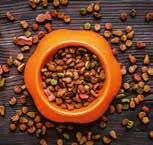
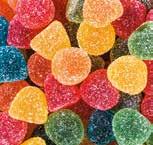







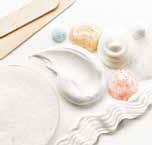


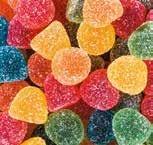
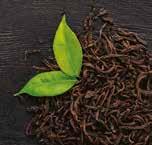


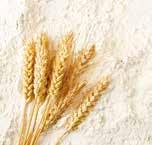




















YOU CAN THINK IT
CAN PACK IT
IF
WE
Watch our sustainable packaging solutions at: www.the-packaging-group.com/videoportal
Funding announced for major aquaculture project in Thailand and Vietnam
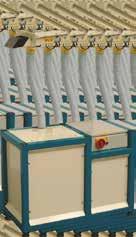
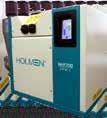
The University of Stirling has secured major funding to improve the welfare of farmed fish in Thailand and Vietnam, with the aim of enhancing the quality of fish for human consumption.
The Institute of Aquaculture, which is a world leader in its field, has been awarded £780,000 for the project from Open Philanthropy.
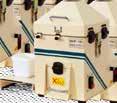
The funding will help researchers improve resources for farmers in areas where fish produced is eaten locally and where there are some of the largest concentrations of the production and consumption of farmed fish and shellfish globally.
Professor Dave Little, Deputy Head of the Institute of Aquaculture at the University of Stirling, is one of the researchers leading the project. He says, 'Across Asia there are serious welfare issues that affect millions of aquatic animals and there is an urgent need to drive change. In addition, there is very little awareness about the importance of improving the situation.
'This significant research funding will help tackle these issues and we hope it will vastly improve aquatic animal welfare, result in fewer losses, produce a higher standard of meat, and boost the economy.'
The research will support transformational change in the welfare of farmed fish across the continent. Interventions will have the potential to avoid unnecessary harm and pain to the fish, help farmers improve efficiency and business resilience, support a sustainable environment, contribute to a healthier general population, and combat poverty and hunger.
The team of aquaculture academics will do this by mapping opportunities for improved welfare, establishing networks of stakeholders, supporting education and advocacy, research into delivering improvements and removing barriers, and developing guidelines. Outcomes will be disseminated through videos, podcasts, course materials and a resource website, publicised through social media channels and relevant publications.
A key element of the project will be supporting local researchers and working closely with other stakeholders to develop innovative approaches to improving fish welfare practically, all while raising awareness and interest among consumers. The work will fund and support the development of the most promising small projects in both countries to help achieve these goals.
Importantly, the project will also make a fully funded MSc scholarship to study at the Institute of Aquaculture available to a Thai and Vietnamese national, harnessing and growing the potential of local talent to continue work in this area into the future.
The project will last two years and is also being led by Professor Jimmy Turnbull, Strategic Lead on Animal Welfare; Dr Amaya Albalat, Senior Lecturer in Welfare and Behaviour; and Dr Sonia Rey Planellas, Lecturer in Welfare and Behaviour.
Made in Britain, Trusted Worldwide. We are Laboratory Inline OLM N H ® Portable WE PELLETS (not dust)
Boost for UK fishing industry with new infrastructure projects announced
Funding to boost the UK fishing industry through projects to upgrade infrastructure and revive local docks has been announced today, as the latest round of investment opens for bids from the UK-wide UK £100 million Seafood Fund to modernise the sector.

Winning projects set to receive a share of UK£20 million include the expansion of processing facilities for popular British fish like Scottish salmon and Cornish sardines, alongside money to bring an ageing dry dock back to life.
The UK Seafood Fund is a landmark government investment supporting the long-term future and sustainability of the UK fishing and seafood industry, with the infrastructure strand of the Fund helping to pay for upgrades to ports, processing and aquaculture facilities so they can meet future demand whilst also boosting jobs and economic growth.
As well as announcing the winners from the first round of this scheme, the government has today also confirmed a further UK£30 million will be made available for infrastructure projects as the latest round of funding opens for bidding.
The infrastructure scheme also supports businesses to become more environmentally sustainable, with successful bidders in Round 1 investing in greener technologies to reduce greenhouse gas emissions and adapting to more reusable materials.
Fisheries Minister Mark Spencer says, 'Fishing communities are an important part of the UK's heritage and they make a valuable contribution to our economy, so we are backing them with funds to boost growth and opportunities across the industry.
'This funding will ensure seafood businesses throughout the supply chain are well-equipped to keep pace with increasing demand at home and abroad, boosting production and sustainability and building a resilient sector for the future.'
Successful bidders from the first round of infrastructure funding will receive a share of £20 million from the government, matched with nearly £50 millions of investment from private sources. They include:
HSH Coldstores who are investing in a cold storage and
logistics facility to further expand seafood processing in Grimsby and generate new jobs in the area
Scottish company Denholm Seafoods who will install equipment to increase production of mackerel and herring landed at Peterhead
Cornish based Falfish who will invest in new technology to grade, freeze and pack pelagic fish in support of building two purpose-built Sardine fishing vessels
Shoreham Port who are transforming a historic dry dock into a modern facility for local and visiting fleets
Tom Willis, Chief Executive at Shoreham Port, says, 'We are delighted our application to redevelop the Dry Dock at Shoreham Port has been successful. An essential facility for vessel owners, it is one of the few dry docks remaining in the south of England and is part of our proud history, serving users since the 1930s.
'When engaging with the fishing community, investment in improving Dry Dock capability is consistently highlighted as a priority. The redeveloped Dock will offer excellent dry maintenance facilities for vessels up to 50m in length, with workshop access and quayside space.
Commencing shortly, the project will be completed by early next summer'.
Allan Stephen, Director at Denholm Seafoods, says, 'We are delighted with the support we have received from DEFRA, which from the outset has been highly productive. Securing the DEFRA grant will enable Denholm Seafoods to invest in our new freezing and production facilities which will maintain our high quality product.'
The UK has a thriving seafood sector with exports of salmon – one of the UK's most important exports – worth around £600m annually and other abundant fish stocks such as Cornish sardines in demand on the continent for their quality.
For the second round of the UK Seafood Fund infrastructure scheme, which is worth £30 million and opens November 25, businesses will have until March 2025 to deliver their transformational projects meaning a wider range of organisations will be able to apply.
Defra will also shortly announce successful applicants from the Fisheries Industry Science Partnerships (FISP) scheme, part of the UK Seafood Fund, which funds data collection and research to support sustainable fisheries management. The final FISP round will launch in December 2022.
International Aquafeed - December 2022 | 15
First open sea cage culture farm set up at Candolim
Sheldon Fernandes, a resident of Candolim, became the first entrepreneur in the state to start an open sea cage farm under the Goa State Mariculture Policy.
Based on the request submitted to the Department of Fisheries, Mr Fernandes was sanctioned a licence to undertake open sea cage culture at Candolim. He is also a beneficiary under the centrally sponsored scheme of the Department of Fisheries, Government of India and the State Fisheries Department.
The cage frames made of galvanised iron (GI) have a diameter of six-metres and fish are cultured inside a net - with a depth of five-metres - tied to the cage frame.





Hatchery produced seeds of Asian Seabass (Chonak) and Silver Pompano, which are being cultured in five cages, two cages

under All India Network Project on Mariculture of ICAR- Central Marine Fisheries Research Institute (CMFRI). Karwar have been integrated into said project. The technical advisory for the cage culture is also provided by ICARCMFRI, Karwar.
The open sea cage culture farm was inaugurated by Director of Fisheries Shamila Monterio in the presence of Dr Suresh Babu P P, Dr Anuraj A, Scientist from CMFRI, Karwar and Chandresh Haldankar, Superintendent of Fisheries, Department of Fisheries.
Seeing the huge potential in mariculture activity, the Goa government became the first state in India to notify mariculture

Cablevey® Conveyors is a registered trademark of Intraco, Inc. 06/2022 Gentle Clean Reliable Conveying Decades of Experience Worldwide. Experts in Cable & Disc Conveying Solutions. 66+ Countries Served 32,000+ Conveyors Commissioned The Heart of the System CABLE & DISCS +1(641) 673-8451 info@cablevey.com www.cablevey.com Cablevey® Conveyors is a registered trademark of Intraco, Inc. 07/2022 aquafeed.co.uk FISH FARMING TECHNOLOGY 16 | December 2022 - International Aquafeed
Port of San Diego extends agreement with and reinvests in Sunken Seaweed pilot farm in San Diego Bay

As a leader of the Blue Economy in the San Diego region, the Port of San Diego is adding five years onto its agreement with Sunken Seaweed, LLC., a local start-up demonstrating the feasibility and benefits of seaweed and shellfish aquaculture in San Diego Bay. The Port is also investing an additional US $100,000 in the project in exchange for an increase in revenue share from five percent to six percent and an extended revenue share period from 2043 to 2048.
Sunken Seaweed is led by two marine ecologists committed to pioneering sustainable seaweed aquaculture in San Diego. They are growing culinary seaweeds including dulse, sea lettuce, ogo, and other larger kelp varieties. Sunken Seaweed's goal is to sell their seaweed to chefs and food production and distribution companies. They are also exploring a range of products including fertilisers, human food supplements, and livestock feed additives. Sunken Seaweed's pilot farm is located at the north-western end of Grape Street Pier Number 1 along the North Embarcadero.
“Sunken Seaweed has successfully established a seaweed farm in San Diego Bay and the results they're seeing and partnerships they've formed are promising. It makes sense for us – both from an economic and environmental standpoint – to help them grow their operations and hopefully someday flourish as a long-time business in our waters. Doing so can help expand aquaculture in our region and throughout the state while also improving water quality, enhancing our ecosystems, and mitigating climate change impacts” says Vice Chairman Rafael Castellanos, Port of San Diego Board of Port Commissioners.
The amended agreement will allow Sunken Seaweed to continue conducting seaweed and shellfish aquaculture ecosystem services research in San Diego Bay. Additionally, they'll be able to expand and scale their landbased seaweed aquaculture operations at a new satellite location in Humboldt Bay in collaboration with a wellestablished, vertically integrated aquaculture company, Hog Island Oyster Company. The amendment will support the scaling of Sunken Seaweed operations and allow the company to position itself as an industry leader in seaweed production, as well as in ecosystem services research applied to seaweed aquaculture in port environments.
“Through the Port of San Diego's initial investment in 2017, Sunken Seaweed and San Diego State University marine ecologists have been able to conduct extensive research and development in seaweed aquaculture, and discovered the huge potential that San Diego possesses in this field,” says Leslie Booher, co-founder, Sunken Seaweed.
“With this reinvestment, not only can we now bring our farmed seaweeds to the market, but we're able to continue working with expert researchers and engaging young people interested in sustainable aquaculture in San Diego. This is how we grow the blue economy, and we're thrilled that our partners at the Port are champions of this sector.”
Aquaculture encompasses the cultivation of shellfish,
fish, and aquatic plants/algae. The aquaculture sector is driven by a growing global demand for seafood and the lack of a domestic supply. The Sunken Seaweed pilot project is part of the Port's Blue Economy Incubator, established to assist in the creation, development, and scaling of new water-dependent business ventures on San Diego Bay focusing on sustainable aquaculture and Portrelated blue technologies.
The Sunken Seaweed project has ecological and economic benefits. The Port can use results of the pilot project to assess seaweed aquaculture as a tool for: Bioremediation to improve water quality – seaweed and shellfish can absorb and/or filter certain contaminants such as excess nitrogen from on-land runoff, heavy metals, and PCBs
Carbon sequestration – seaweed can help reduce greenhouse gases by storing atmospheric carbon Coastal habitat and infrastructure protection – seaweed and shellfish can dampen storm surge caused by climate change-driven sea level rise Habitat restoration and fisheries enhancement – seaweed and shellfish provide habitat, foraging opportunities, and refuge for local fisheries and non-fisheries species Mitigation Banking, and more Additionally, shellfish and seaweed aquaculture are more ecologically beneficial and sustainable than land farming – it doesn't require fertiliser, pesticides, added nutrients or fresh water. Seaweed and shellfish absorb all their nutrient requirements from sunlight and the surrounding water, and no waste is produced.
Partnering with companies like Sunken Seaweed through the Blue Economy Incubator supports the Port's advocacy for emerging water-dependent uses and has a clear nexus to the Port's mission. Economically, the Port will collect royalties as the project grows and produces revenue, and the project will inform future aquaculture operations and ecosystem services research within and around San Diego Bay and other ports throughout the state.
The Port is a long-time champion and catalyst of the region's Blue Economy with its shipbuilding, commercial fishing, marine research, cruise, and cargo business lines. The Port's Blue Economy Incubator is a launching pad for aquaculture and blue tech entrepreneurs by providing key assets and a diverse portfolio of services focused on pilot project facilitation. As the state-legislated trustee of tidelands around San Diego Bay, developing sustainable domestic aquaculture and driving blue tech innovation helps fulfil the Port's public trust responsibility to promote fisheries and commerce, as well as aligning with our mission to enhance and protect the environment.
International Aquafeed - December 2022 | 17
Dietary discrimination of organoleptic cues in
gilthead seabream (Sparus aurata)
by Sofia Morais, Innovation AQUA Team Leader, Lucta S.A., Spain & José Miguel Cerdá-Reverter, Senior Researcher in Instituto de Acuicultura Torre de la Sal, Spain
Self-feeding and dualchoice systems have been extensively used to study animal feeding behaviour and food preferences but are still little explored in fish species. Seabream (Sparus aurata) is an important farmed Mediterranean species, but little is known regarding its taste preferences, including its capacity to discriminate diets using sensory (olfactory and/or gustative) traits. With this in mind, the capability of gilthead seabream to discriminate feed organoleptic qualities was investigated by presenting the fish with a dual choice of feeds in a self-feeding system. Furthermore, two consecutive trials were performed with the same group of fish during summer or autumn (i.e., at different water temperatures), to assess whether the feeding behavior might be affected by the fishes' physiological state or environmental parameters.

The dual choice self-feeding system
A system of twelve flow-through 500L tanks was equipped with two identical self-feeders
Table 1: Formulation of the control (C) and positive (P) experimental diets. The negative (N) treatment was prepared by adding 1.5% quinine hydrochloride dihydrate (reducing the corresponding amount of wheat meal) to the C basal diet.
Ingredients, % C P
Fishmeal Super Prime 12.5 30.0
Fishmeal 60 10.0
CPSP 90 6.0
Squid meal 83 6.0
Krill meal 6.0
Soy protein concentrate 17.0
Wheat gluten 6.0
Corn gluten 10.0
Soybean meal 48 20.0
Rapeseed meal 5.0
Wheat meal 10.0 28.5
Sardine oil 4.8 12.5
Rapeseed oil 11.2
Vit & Min Premix 1% 1.0 1.0
MCP 2.0
L-Lysine 0.3
DL-Methionine 0.2
Composition (% feed)
Crude protein 44.0 44.0
Crude fat 18.2 18.2
activated by independent string sensors hanging 3cm below the water surface in each tank. Both string sensors were placed together to ensure that the distance from the sensor to the feeder was the same, and the water supply was placed on the opposite side (Fig. 1). When each feeder was activated by fish pulling the string sensor, a feed reward of 1g/demand was delivered and recorded by a computer software that continuously monitors (24h/day) feed demands from each feeder.
Three isoenergetic and isoproteic diets with contrasting organoleptic properties were formulated: a control (C) diet, a positive (P) high palatability diet containing high levels of fish, squid and krill meal, and a negative (N) diet, presumably aversive, in which 1.5% quinine hydrochloride dihydrate was added to the C basal diet (Table 1).
The trials consisted in offering seabream a choice of two of these diets, in all possible dual combinations, to examine whether they can discriminate and show preference between them. Two consecutive experiments were done with the same group of fish in summer (trial 1: average fish body weight of 38g; average water temperature of 25.2ºC) and autumn (trial 2: 100g fish; at 17.3ºC). Each experiment had 3 phases:
18 | December 2022 - International Aquafeed
phase 1) acclimation with C only; Phase 2) dual-choice; phase 3) dual-choice with reversal of feeders (Fig. 2). A third subsequent trial was performed in winter (130g fish; at 13.6ºC) using a single self-feeder per tank, where each tank was fed only C or N, to corroborate the aversive response to N in the absence of dietary choice.

Feeding response and diet discrimination varies according to the season of the year
In the summer trial, diet P (containing more palatable ingredients) was not significantly preferred to C (not shown). In fact, feeding demands of diet P were numerically lower during phase 2, although they increased and were higher than C during phase 3 (Fig. 3). The results in phase 2 might have been influenced by its short duration (7 days) and by the previous familiarization with the C diet during the long acclimation period (phase 1; 17 days). Diet N resulted in a significantly (P<0.05) lower preference and feeding demands, confirming the aversive taste of quinine.

When the trial was repeated in autumn, at lower water temperature and with bigger fish (Fig. 4), diet P showed a

feeding demands compared to the C diet. As in summer, diet N had a lower preference and feeding demands, although not significantly different from C in phase 3 demands.
Presence of bitter substances in feed leading to feed refusal
A third trial was performed in winter (Fig. 5) with a single feeder in each tank delivering only one type of feed (either C or N). Surprisingly, when no choice was available, there was no significant difference in demanded feed between the N and C treatments. However, the presence of the bitter

Figure 1: Experimental dual choice feeding setup
WWW.AQUARIUSLAWYERS.COM.AU +61 (02) 8858 3233 • Mariculture and Aquaculture leases • Aquaculture and mariculture disputes • Commercial fishery issues • Acquisition and ownership of fisheries • Registration of fishing rights • Defence of fisheries prosecutions • Seizure of fishing vessels • International fishing licenses • High seas fishing Legal business advice: International Aquafeed - December 2022 | 19
Figure 2: Summary of the experimental design of trials 1 and 2
Figure 3: Results of trial 1 performed in summer, showing the average daily feeding demands recorded during phase 2 (duration: 7 days) and phase 3 (18 days). Phase 1 (acclimation) lasted 17 days. The average weight of the fish at the start of the trial and average temperature during the trial are indicated.
Figure 4: Results of trial 2 performed in autumn, showing the average daily feeding demands recorded during phase 2 (duration: 10 days) and phase 3 (15 days). Phase 1 (acclimation) lasted 28 days. The average weight of the fish at the start of the trial and average temperature during the trial are indicated.
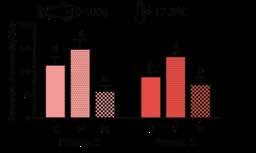

Figure 5: Average demanded and consumed feed when seabream where offered a single feed (i.e., no choice available). Consumed feed was calculated by subtracting the amount of non-consumed (collected from the tanks) from the amount of demanded feed. The average weight of the fish at the start of the trial and average temperature during the trial are indicated.
of demanded feed in N versus 2.6% in C). This suggests that the fish on the N treatment were “hungry”, and therefore continued demanding feed, but the presence of quinine in the feeds caused them to reject the demanded feed at higher levels.

Conclusion

These experiments clearly showed that seabream is capable of discriminating, and hence select, feeds with different organoleptic properties. However, an aversive taste (quinine) seems to generate a stronger response than a preferred one. The potent deterrent effect of quinine, denoted by a negative preference and feed refusal, is consistent with the vital role of bitter taste in signaling potentially toxic or harmful substances. On the other hand, feed intake and preference towards a diet with very high levels of marine ingredients, associated to positive sensory cues, was clearly more marked in autumn than in summer. This was likely related to the high-water temperature in the summer trial, although the smaller fish size (linked to higher growth rates) could have also influenced the results, and suggests an association between fish dietary selectivity, physiological state and environmental conditions. In simple terms, when nutritional and energetic demands associated to a fast metabolism and growth rate are high, it is plausible that fish cannot afford to be “fussy”, unless there is a warning signal that indicates a potential danger if ingesting the feed.
Part of the information presented here has been published in: Puchol, S., Leal, E., Angotzi, A.R., Rosel, J., Morais, S., CerdáReverter, J.M. (2022) Dietary discrimination using a dual-choice self-feeding system in seabream (Sparus aurata). Aquaculture 559:738449. https://www.sciencedirect.com/science/article/pii/ S0044848622005658

Experts in Smart Industry Solutions for Feed Production Fully automated process control from order to product High quality product output with less operator actions Interaction with ERP, Formulation and warehouse software Track & Trace and Contamination module included Reporting services & KPI Dashboarding Turnkey projects including MCC cabinets, IT equipment and Fieldinstallation 24/7 remote support keeps your feedmill up & running Scan the QR-Code for more information www.inteqnion.com 20 | December 2022 - International Aquafeed









































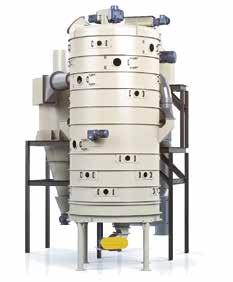




THE INNOVATIVE SOLUTION TO CLEANER FISH MANAGEMENT & SEA LICE CONTROL COMPLETE, TAILORED FEED BLOCK DIETS FOR LUMPFISH & WRASSE REDUCED IMPROVED Produced in the UK by www.vitaaquafeeds.uk • SEA LICE POPULATIONS • CATARACT PREVALENCE • AGGRESSION DURING FEEDING • ENERGY CONSUMPTION • STORAGE SPACE & COSTS • MEDICAL TREATMENTS • FISH HEALTH & WELFARE • MORTALITY RATES • STABLE, CONTROLLED GROWTH • LONGEVITY & EFFICACY • PRACTICAL FEEDING METHODS • DAILY OPERATIONAL COSTS International Aquafeed - December 2022 | 21
Pioneering in Postbiotics
Over the last decade, new technologies have facilitated large-scale analysis of the genetic and metabolic profile of microbial communities, increasing our knowledge and enabling a deeper understanding of the role of the microbiome in health and disease. It is now well recognized that microorganism populations, be it in the digestive tract, on the skin, or in the oral cavity, can be modulated using “biotics”. The most popular “biotic” substances are prebiotics, which specifically feed beneficial bacteria, and probiotics, live organisms that have a beneficial effect on the host. A new category has now emerged since the 2021 consensus paper by the International Scientific Association of Pre- and Probiotics (ISAPP), the so-called “postbiotics”, which are defined as intact or fragmented non-living (“inanimate”) micro-organisms with a beneficial effect on the host
This concept is emerging as an important microorganism-derived tool to promote health, but the term 'postbiotic' has been used inconsistently in scientific literature. Several terms had previously been used, for example “Para postbiotic”, “non-replicating microorganisms” whereas the term “postbiotic” was often used to refer to individual microbial metabolites, such as butyric acid. In 2021, the ISAPP Consensus provided a clear definition, and proposed to hitherto refer to a postbiotic as ‘a preparation of inanimate micro-organisms and/or their components that confers a health benefit on the target host’. It can contain intact inanimate microbial cells and/or microbial cell fragments/structures, with or without

metabolites/end products.
Postbiotics offer several advantages over pre- and probiotics. Prebiotics first need to selectively stimulate growth of beneficial bacteria, while probiotics need to become active in the digestive tract and start producing active components. In both cases, this requires a certain amount of time. In contrast, postbiotics already contain their active components in large amounts, since these are produced in large numbers during the fermentation process. Therefore, they can act immediately on the microbiota and intestinal epithelial cells. There are examples of postbiotics that have been developed from probiotics. An additional benefit of postbiotics is that, in some cases, heat treatment of the microorganism actually enhances its immunomodulation effect, probably owing to the variety of compounds they release following the treatment (Piqué N. et al. Health Benefits of Heat-Killed (Tyndallised) Probiotics: An Overview. International Journal of Molecular Sciences 2019;20(10): E2534). Other advantages of postbiotics compared to live probiotics are that it is nearly
 by Philippe TACON, Director Business Development Animal Health, Adare Biome, France
by Philippe TACON, Director Business Development Animal Health, Adare Biome, France
22 | December 2022 - International Aquafeed
Figure 1: LB Improves weight gain in tilapia challenged or unchallenged with cadmium during a 8 weeks feeding trial (Abu-Braka et al, 2017)


ai1659709269130_IRIDA_PRINT_AD_05-08-22_OUT_102.5x280_ENG.pdf 1 05/08/2022 International Aquafeed - December 2022 | 23
et al., 1993), inhibition of epithelial cell association with and invasion by several strains of enteropathogenic bacteria including E.coli and Salmonella (Coconnier et al., 1993), reduction of viable Salmonella cells in mouse intestines (Coconnier, et al., 1997), and prevention of damage to brush border-associated structural and functional proteins in Caco-2/TC7 cells exposed to E.coli C1845 (Lievin-Le Moal et al., 2002). Lactobacillus LB can also influence animal health beyond the gastrointestinal tract, by modulating systemic immune- and metabolic responses, and by affecting signaling via the nervous system. It has been extensively studied using in vitro techniques, murine models, and in numerous human clinical studies (for reviews, see Lievin-Le Moal, 2016; Remes et al., 2020).
LB has also been found to have significant effect in reducing the effect of pathogens infection in aquatic animals such as shrimp and tilapia. As in terrestrial animals, an effective maintenance of the digestive health by postbiotics might lead to improve the general wellbeing of the animals and the production performance.
In 2015, a challenge study has been performed in white shrimp Litopenaeus vannamei, where they were fed LB during 4weeks and then injected intraperitoneally with WSSV. After 7 days the mortality was reduced by 35 percent. Similar results were found when L. Vannamei were challenged with Vibrio parahaemolyticus. In this trial, the effect could be seen as early as 7 days after the start of treatment making the protection by postbiotic an effective tool in early production stages. It has also been shown that in normal condition an improvement of growth by 9 percent can be expected.
Trials performed in Egypt on tilapia have also shown better growth performance and stimulation of the innate immune response such as phagocytic index. This led to a better resistance to a challenged Aeromonas hydrohilia infection (Khalil et al 2014). A better resistance to Cadmium contamination was also confirmed in another study (Alla Zikaria et al 2017).

In summary, the postbiotic Lactobacillus LB has been shown to positively impact several measures of gut integrity in vitro, in murine and human models, and in several trials in fish and shrimp. The documented modes of action whereby LB has been shown to bind to epithelial cells, block binding of pathogens, like E. coli and Salmonella, and maintain the integrity of gut epithelia, are consistent with the recent results in several aquatic species. Collectively these data suggest that LB has potential to help maintain normal gut health in shrimp and fish through stress induced by environmental changes.
(References are available on request).
Reach optimum feed intake Improve resistance to stress and pathogens Highly digestible protein source always inspiring more always inspiring more aquafeed.symrise.com Since January 2022, Aquativ/Diana Aqua became Symrise Aqua Feed. ActiTuna, attractant for shrimp feed 2022-05-AP-ACTITUNA-90x270.indd 1 10/06/2022 14:46 24 | December 2022 - International Aquafeed
Figure 2: LB stimulates the innate immune response (Phagocytic index) of tilapia in a 10-week feeding trial (Khalil et al, 2014)


FISH FARMING TECHNOLOGY As a gift from us this festive season, you can claim a 12 month digital subscription FrEE of charge. Simply visit: https://mymag.info/e/1438 and set up an account using promo code: XmAS2022 Then download our app from your favourite app store and log in! A new way to manage your subscription in your chosen language Going mobile Get a free digital subscription
Advancements and scope for the application of vaccines in aquaculture
by Emma Y K Lau, Simon J Davies & Alex H L Wan, University of Galway, Ireland
Vaccination
Intensive aquaculture production can often lead to a higher risk of zoonotic disease transmission due to increasing stocking stress, low genetic diversity, and potentially rapid degradation of culture conditions, e.g., ammonia spikes, biological oxygen demand increase, and carbon dioxide building up. Increased incidences of animal-to-animal contact due to higher stocking density can also increase the risk of disease spread between animals.
Chemotherapeutic agents such as antibiotics have been traditionally used in aquaculture to promote growth and prevent and treat diseases (Lulijwa, et al., 2020). Nonetheless, concerns over the chemotherapeutic residue leaching into the aquatic environment through effluent have brought serious concerns over the rise of antibiotic-resistant pathogens. Subsequently, this led to a ban or reduce the use of antibiotics. For example, Vietnam’s regulations controlled the use of antibiotics since 2002, followed by the banning of nitrofurans and chloramphenicol in 2009 (Lulijwa, et al., 2020). Similar legislation was also implemented in many other Asian countries with major aquaculture industries.
For the European Union (EU), antibiotic usage as a growth promoter was banned in 2006 by Regulation 1831/2003/EC on additives for use in animal nutrition. While the prophylactic and
therapeutic use in farmed animals is highly regulated, the EU also established maximum residue levels for antibiotics in Regulation 470/2009/EC. A similar ban on antibiotics was implemented in the United States in 2017 over their use as a growth promoter (Bloomer & McKee, 2018). The growing concerns over the impact of antibiotics and legislative restrictions lead to the development of safer and more sustainable alternatives for controlling opportunistic pathogens and disease outbreaks.
Vaccination is one of the most effective ways in preventing disease outbreaks. Fish and crustacean diseases are mainly carried by bacteria, viruses, fungi, and other parasitic agents, such as cestodes, trematodes, nematodes and protozoa, that can all be vaccinated against. Fish vaccine was first reported in 1942 by Duff on trout against furunculosis caused by Bacterium salmonicida (Muiswinkel, 2008). Results of the experiment showed that vaccination increased the survival rates of fish (Duff, 1942). Although there are no licensed vaccines for crustaceans currently, many trials were performed. Trials have been performed against vibriosis and white spot syndrome in shrimps as those diseases are the main contributors to production losses (Amatul Samahah, et al., 2020). Overall findings of the trials proved the effectiveness of vaccination in reducing losses in shrimp production.

26 | December 2022 - International Aquafeed
Table 1. Mechanisms of actions of different types of adjuvants.
Type Action Mechanism
I Increase antigen uptake and presentation
II As Pathogenassociated molecular patterns (PAMPs)
Localise antigens, Prolong antigenic exposure, Attract antigenpresenting cells
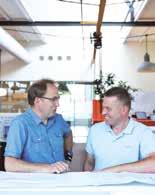
Acts on Pattern recognition receptors (PRRs) to damage host tissues

Examples of adjuvants
Liposomes, Oil emulsion, Aluminium hydroxide, Polymer microspheres, Cochleates
Heat shock proteins, CpG-rich motifs, Complement, Oil emulsion surface-active agents, Monophosphoryl lipid A
III Directly altering the host’s immune responses
Via co-stimulation signals on T and B cell differentiation and proliferation
Cytokines
Fundamentals in vaccines
Vaccines are preparations of antigens derived from pathogenic organisms, rendered non-pathogenic by various means, which will stimulate the immune system in such a way as to increase the resistance to disease from subsequent infection by a pathogen (Bedekar & Kole,
Specialist in the design and build of installations for the grain-processing and compound feed industry

Ottevanger Milling Engineers is supplier of machines, installations and complete process lines for the compound feed industry and grain processing companies.

Our expertise in project management, engineering and production ensures the successful realization of machines, process lines and complete installations

www.ottevanger.com
for more
International Aquafeed - December 2022 | 27
Fane Valley, Ierland | 60tph
Scan the QR-Code
information

NOURISH PROTECT SUSTAIN PRODUCTIVITY PERFORMANCE NUTRITION PROTECTION
2022). Vaccines target the adaptive immune system of the animal, which includes mucosal, cell-mediated, and humoral immunity in fish. Mucosal immunity is mostly found in mucosal surfaces of the gut, skin, and gills of fish with specific antibodies found in teleost fish (Gomez, et al., 2013).
On the other hand, crustaceans such as decapods only have innate immunity that constitutes humoral and cell-mediated responses. There are no adaptive immune responses because of the lack of myeloid lineage cells. Therefore, crustaceans cannot produce immunoglobulins against specific pathogens to produce immunological memory (Younes, 2021). However, in crustaceans such as shrimps, IgSF, a member of the immunoglobulin superfamily helps form an immune response that is similar to adaptive immunity in vertebrates (Amatul-Samahah, et al., 2020). The differences in generating adaptive immunity between vertebrates and crustaceans lead to challenges in developing an effective vaccine for crustaceans. Vaccine development for farmed crustacean species is promising with research being focussed on alternative adaptive immunity in invertebrates.
Types of vaccine
There are two main types of vaccines available for aquaculture: inactivated and live vaccines, which offer varying degrees of immunity. Inactivated vaccines are further classified into inactivated, subunit and recombinant vaccines. Live vaccines are categorised into attenuated and DNA vaccines. Generally, live vaccines are considered more effective as they can generate not only mucosal immunity but also cell-mediated and humoral immunity (Mohd-Aris, et al., 2019).
1. Live vaccines
Among all the sub-division of live vaccines, DNA vaccines are most applicable to aquaculture. DNA vaccine has proven to have high efficacy against the Tilapia Lake virus in farmed Nile tilapia (Yu, et al., 2022). The development of DNA vaccines is now a growing research interest as they are also reportedly effective in salmonids. For example, DNA based vaccine against the infectious hematopoietic necrosis virus been developed (Dalmo, 2017). DNA-based vaccines can generate longterm immunity which is often safer and more stable for storage and transport (Hamed, et al., 2021). The principle of a DNA vaccine is to deliver a DNA or RNA coding sequence specific for an antigen to the host fish (Hamed, et al., 2021). Therefore, a comprehensive understanding of the infection mechanism of the pathogen is critical. It is also important to understand the genetic composition of the animal to relate the clinical symptoms with the infection mechanism. Understanding the fish genome establishes the knowledge of the vaccine's action and effect on the host fish's body, reducing the possibility of causing immunogenic tolerance by antigens expressed inside the fish. Although DNA-based vaccines can offer effective protection for commercially important farmed aquatic species, the application is limited due to insufficient knowledge of disease processes and the genome of some aquaculture fish species (Dalmo, 2017). Concerns of virulence reversion also hinder its exploitation in aquaculture (Matsumoto, et al., 2018).
2. Inactivated vaccines
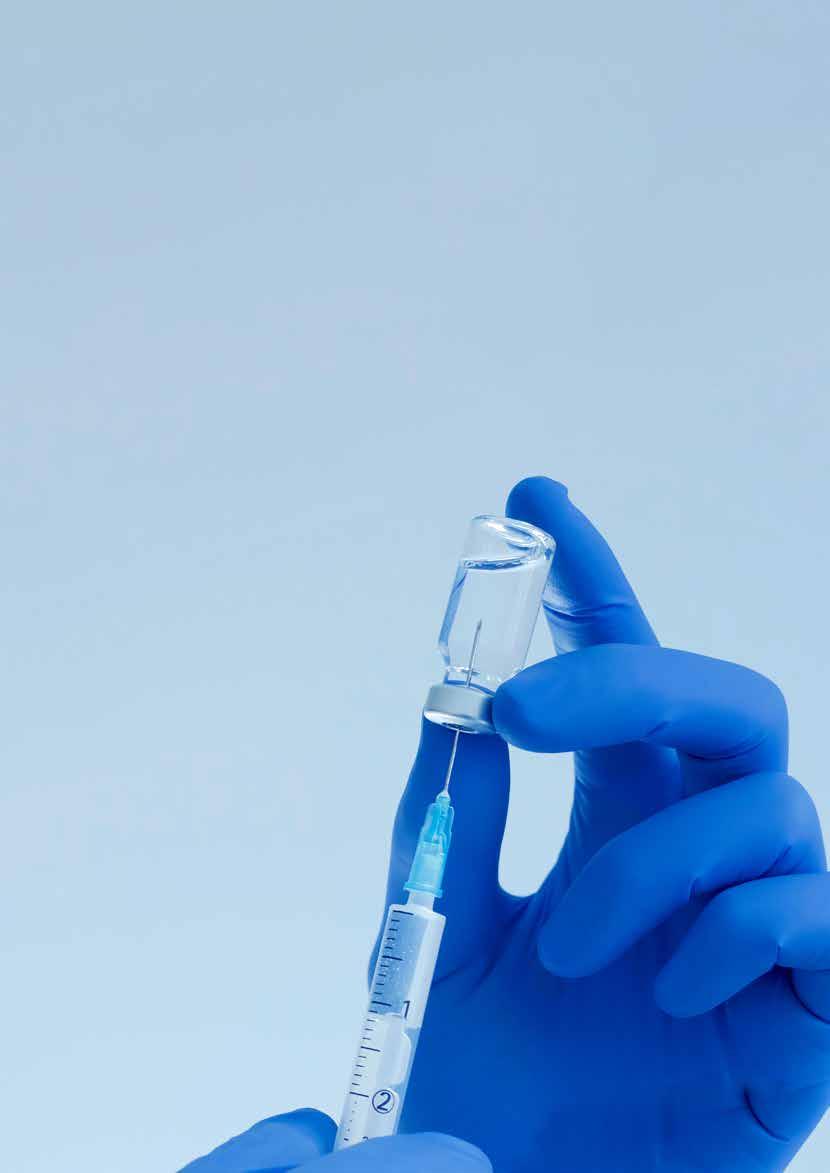
In contrast, inactivated (killed) vaccines are more conventional and less immunogenic. They often require adjuvant to enhance the effects to be effective against viral and intracellular bacterial diseases (Ma, et al., 2019). As inactivated vaccines are not found within the environment and will persist in vaccinated fish, they are safer to use (Ma, et al., 2019). Adjuvants are classified into three types by their sites of action (Table 1): Type I directly acts on antigens; Type II acts on pattern recognition receptors (PRRs) as pathogen-associated molecular patterns (PAMPs); Type III directly acts on the host immune system.
Vaccine administration methods
Injection, oral and immersion are the three main administration methods available. Multivalent options with either different bacterins or a combination of bacterins and the killed virus are available in injection vaccines (Plant & LaPatra, 2011). The purpose of the multivalent nature is to enable the fish to respond to a single disease caused by multiple pathogens, but the effect is bounded by the capability of the fish to generate an immune response (Plant & LaPatra, 2011).
For most commercially important farmed fish (e.g., Atlantic salmon and rainbow trout), vaccines are often administered by intraperitoneal injection (Adams, 2019). This is currently
International Aquafeed - December 2022 | 29
considered the most effective vaccination method (Plant & LaPatra, 2011). However, vaccine administration through injections can be bound by various constraints, including the size of the fish that a vaccine can be administered, logistics, and labour costs. For the former, fish that are larger than 5g is often the most feasible size for commercial vaccination programmes (Mondal & Thomas, 2022). This is due to the issue of being too labour intensive, adhesion formation, temporary reduction in feeding, risk of puncturing the internal organs, a secondary infection caused by the wound, and operator administrating the vaccine (Dadar, et al., 2017). While large cohort sizes mean that vaccination programmes can be labour-intensive and timeconsuming. The injection vaccination method also requires anaesthetic which can cause extra stress to the animal. In some cases, extensive stress (e.g., being out of the water too long, low oxygen when waiting for vaccination, or physical damage caused by handling and crowding) can lead to secondary infection after being exposed to the primary challenge – injection of the vaccine (Plant & LaPatra, 2011). Similarly, lesions caused by injection also make the farmed fish prone to opportunistic infections. Nonetheless, injections are one of the most effective means of vaccine delivery.
Immersion vaccine requires bathing or dipping the fish in the vaccine solution for a short period of time (Sudheesh & Cain, 2017). One of the key benefits of immersion immunisation is the limited handling of stress. Unlike injections, immersion often requires higher dosage levels to achieve similar results due to inefficient uptake of antigens across mucosal membranes (Dalmo & Bøgwald, 2019). This can be particularly prohibitive when dealing with large numbers of fish.
Oral vaccination delivers the particulate antigen via feed. Although this has limited stress for farmed aquatic animals, this method can have several disadvantages. Farmed fish and shrimp species house in groups and often develop social hierarchies. Animals of higher ranking will have priority access to the feed (Bessa, et al., 2021). Those lower in the hierarchy may not receive as much feed as the dominant animals. Therefore, it is difficult to determine if each animal would need to receive the targeted dose for proper immunisation.
Oral and immersion vaccines are both mucosal vaccines which will generate mucosal immunity (Gomez, et al., 2013). They potentially can be more cost-effective in terms of offering fish immunity as most infections begin at the mucosal epithelial surfaces. For example, ectoparasite Neoparamoeba perurans vegetates in the gill epithelium to cause amoebic gill disease (AGD) in salmonids and some non-salmonid species. The disease results in significant losses in the salmon farming industry. However, no commercial vaccines are currently available against AGD (Adams, 2019). Further research on fish mucosal adaptive immunity and mucosal memory responses must be conducted to develop a mucosal vaccine that can generate an efficient immune response against AGD.
Among the three methods, oral vaccination would be most desirable due to the ease of administration and the low cost. The antigen must be securely encapsulated in the feed to maximise oral vaccine efficiency. The acidity in the gastrointestinal tract increases the difficulty of the antigen to remain undigested. There are three main ways to ensure encapsulation of the antigen: biopolymers, bacterial cultures, biofilms, and exploiting fish appetite for crustaceans (Mičúchová, et al., 2022). Strategies also need to be employed to enhance the antigen uptake for oral vaccination. The efficacy of the vaccine depends on the absorption efficiency of the intestinal cells, namely enterocytes
and intestinal phagocytes.
There are only a few commercially available oral vaccines currently. One is targeting infectious pancreatic necrosis virus in salmon and trout (Mičúchová, et al., 2022). Infectious pancreatic necrosis is a disease of concern in aquaculture as it can cause significant economic losses. A trial was performed on rainbow trout with an average weight of 10 g with no history of viral disease in China in 2020 (Chen, et al., 2020). The experimental group was given an oral lactobacillus vaccine expressing VP2 antigen protein fused with AHA1-CK6 as the target molecule. The result showed that rainbow trout can effectively develop a specific systemic and mucosal immune response and improve the body’s ability against infectious pancreatic necrosis.
There are challenges associated with the formulation of oral vaccines. To successfully incorporate the vaccine into the feed, it must be temperature and pressure resistant as high temperatures and pressures during feed manufacturing and extrusion processes may damage the vaccine (Bedekar & Kole, 2022). An option is molecular farming to produce plant-based vaccines that are not affected by processing (Mičúchová, et al., 2022).
There are arguments if oral vaccination would be classified as a feed additive. In the European Union (EU), Regulation (EC) No. 1831/2003 stated that a feed additive is a substance, microorganisms, or preparations, other than feed material and premixtures that are intentionally added to feed or water to perform, in particular, one or more specific functions. They are categorised into four categories: technological, sensory, nutritional and zootechnical additives. Since the oral vaccine does not sit under any of the categories, it is not a form of feed additive. Therefore, oral vaccination is safe to use given the correct formulation and dosing.
Future advancements
Sustainable aquaculture is the balance between economic, ecological, and social needs (Custódio, et al., 2019). It is important to reduce the chances of disease outbreaks in aquaculture to meet the economic and social demand for aquacultural products, such as farmed fish and shrimps. Food safety also needs to be considered when achieving economic goals and social needs
The manufacturing processes of vaccines and adjuvants are two aspects of vaccines that we should emphasise for sustainable development. Traditionally used adjuvants, such as aluminiumbased salts pose a significant risk of brain damage in humans (Alasfar & Isaifan, 2021). Any vaccine residues in the animal could lead to a food safety hazard. Although the implementation of the withdrawal period greatly reduces this risk, this could further reduce with the use of alternative and novel adjuvants. Plant-based alternatives, such as herbs as adjuvants, are developing with promising results. Recent research showed that medicinal herbs induce better immune responses in fish than conventional adjuvants, for example, incomplete Freund’s adjuvant. Research showed that medicinal herbs resulted in higher expressions in both adaptive and innate immune responses in comparison to incomplete Freund’s adjuvant (Soltani, et al., 2018). Vaccinations through oral means avoid unnecessary handling and stress which could lead to better animal welfare, economic, and management point of view. Therefore, new strategies for better delivery systems and variety would lead to better consumer and public acceptance of intensive aquaculture.
(References available on request)
30 | December 2022 - International Aquafeed


PUMPS + GRADERS + COUNTERS FISH sINCE 1 9 58 100%quality SINCE 1958, TRUST IN OUR EXPERIENCE More than 10 complete grading packs, nursery packs, grow out packs, harvesting packs. WWW.FAIVRE.FR Fish farming equipment designer and manufacturer pixies-agency.fr
SUSTAINABLE AQUACULTURE
European Union research and innovation policy for sustainable aquaculture
by Nikos Zampoukas, Policy Officer, European Commission - DG Research & Innovation, Belgium
Professor Nikos Zampoukas, the policy officer at the European Commission developing research and innovation policy for aquaculture, fisheries and marine biotechnology, was one of three keynote speakers at this past year's 20th International Symposium on Fish Nutrition and Feeding held in Sorrento, Italy from June 5-9, 2022. He has provided International Aquafeed with an article based on his presentation 'EU research and innovation policy for sustainable aquaculture
Aquaculture is booming globally, while in the European Union it is not yet sufficiently developed. EU aquaculture production has only increased by 6 percent since 2007, reaching 1.2 million tonnes in sales volume and €4.1 billion in turnover in 2018. The EU's contribution to world aquaculture production represented less than 2 percent of global production in 2018 (FAO 2020).
Competition for space with other activities, an unjustified negative perception by consumers and a heavy administrative burden for authorisation are among the reasons for this slow development. Fish and shellfish farmed in the EU follow the highest environmental, food safety and social standards and the potential for growth of the sector is massive, particularly in southern Europe where there is an acute need for economic growth and jobs.
The European Commission adopted one year ago new strategic

guidelines for a more sustainable and competitive EU aquaculture to tackle this issue. The Commission considers research and innovation to be key for the sustainable growth of aquaculture in Europe and funds it mainly through the multiannual framework programmes for research and innovation, i.e., Horizon 2020 from 2014 to 2020 and Horizon Europe from 2021 to 2027.
These programmes, that are directly managed by the European Commission, represent only around 10 to 15 percent of the total research and innovation investment in Europe as the bulk of the funds are disbursed by national and/or regional authorities. The EU framework programmes, however, gives the opportunity for multinational consortia to work together towards common goals, such good environment status under the EU Marine Strategy Framework Directive. Additionally, the EU provides funding at scale that countries and regions separately cannot commensurate with and ensures the uptake of results throughout the whole European economy. Furthermore, countries and regions often fund specific projects of national/regional interest as a follow-up to the broad projects of common European interest that the EU framework programmes fund.
32 | December 2022 - International Aquafeed
This article gives an overview of what the EU funded in recent years (mainly under Horizon 2020 societal challenge 2 on food security, sustainable agriculture and forestry, marine, maritime and inland water research and the bioeconomy) in terms of research and innovation for aquaculture and also touches upon the priorities for the Horizon Europe programme, particularly under the new approach for doing research (and not only) in the context of the Mission Restore our Ocean and Waters by 2030.

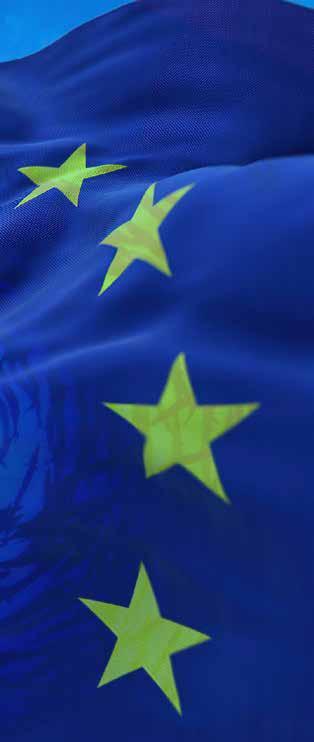
Horizon 2020
In the first years of Horizon 2020, two projects ClimeFish and CERES, worked on the impacts of climate change on aquaculture (and fisheries). At that time, there were almost no models and forecasts on such impacts and these two projects focused on several important aquaculture industries and tried to predict not only the

International Aquafeed - December 2022 | 33
threats but also the opportunities arising from the changing climatic regimes so that the industry is informed and ready to adapt, mitigate and seize opportunities. Climate change issues are at the heart of the European Green Deal, the long-term strategy of the European Commission to make Europe climate neutral by 2050 and it is likely that climate-related aquaculture research and innovation will be also supported by Horizon Europe.
Two other projects, PrimeFish and SUCCESS worked on the marketing of European seafood products (including from aquaculture) in the global markets and proposed strategies to highlight their outstanding quality and increase their competitiveness.
Environmental performance of aquaculture was the focus on the GAIN and IMPAQT projects that promoted the concept of ‘sustainable intensification’ e.g. by developing and advancing integrated multitrophic systems.


Optimisation of spatial planning of aquaculture and other sustainability-related issues were addressed by AquaSpace and TAPAS projects, respectively.
Disease prevention and control was the focus of two projects, ParaFishControl and VIVALDI. The former worked on parasitic fish diseases while the second focused on mollusc pathology and both developed diagnostic tools, prophylactic measures and treatments. A recently started project, NeoGiANT, is exploring the natural antimicrobial and antioxidant properties of white grape marc to replace antibiotics in fish (as well as livestock and poultry) production.
Mediterranean fish farming received particular support in Horizon 2020 with the two most common species, the seabream and seabass, being in the focus of two projects: PerformFish and MEDAID. For example, PerformFish developed a benchmarking tool where bream and bass farmers can input their data to assess how well they perform in terms of environmental impact, fish welfare etc., compared to other similar fish farms. MEDAID in collaboration with PerformFish, developed a single nucleotide polymorphism chip that can be useful for breeding optimisation.
Breeding issues are the focus of the AQUAFAANG ongoing project that works on the most common farmed species in Europe and is doing genome functional annotation, i.e. mapping which area of the DNA regulates which feature and function in order that breeders are able to do more effective genetic selection and develop brood stocks with the most desirable traits that are less susceptible to disease outbreaks.
Breeding and feeding issues are also the focus of the AquaImpact project that is developing tailored feed formulae, supplements
feeding strategies, specifically adapted for
full
NewTechAqua, FutureEUAqua and iFishIENCi, working on smart feeding technology and novel and circular
superior genotypes
programmes
the genotypes
promising
feed ingredients
trails Pole Position! Leiber GmbH | Hafenstraße 24 | 49565 Bramsche Germany | info@leibergmbh.de Real brewers‘ yeast! Really effective! CeFi® pro | best values in bioavailability Biolex ® MB40 | prebiotic. gut health. MOS Leiber ® Beta-S | pure beta-glucans for strong immune defence Leiber ® Beta-S Plus | synergistic combo of pure beta-glucans and MOS Leiber NuTaste® | Natural. Pure. Delicious. For further information just get in touch with us! Visit our new website: leibergmbh.de 34 | December 2022 - International Aquafeed
and
from breeding
enabling
to express their
genetic potential. Feeding and nutrition issues feature in the ongoing
projects
that they are testing in industrial-scale
in commercial fish farms. Ideally, these projects will develop tangible and directly applicable results such as the ones developed by ARRAINA project (under the 7th Framework Programme for Research). ARRAINA was featured on Euronews for drastically reducing fish meal and fish oil in feeds and even developing a completely vegan feed formula for the rainbow trout.

Also importantly, in Horizon 2020 there was a focus on collaboration with South Atlantic countries, mainly South Africa and Brazil, following the Belem declaration. Two ongoing projects, ASTRAL and AquaVitae are working on farming new species, and on circular and sustainable production systems on both sides of the Atlantic Ocean.

The missions of Horizon Europe
In Horizon Europe, collaborative projects on aquaculture research and innovation are mainly funded under cluster 6 on food, bioeconomy, natural resources, agriculture and environment. There are already topics on fish health and welfare and freshwater aquaculture, based mainly on the research gaps highlighted in the reports of the strategic working group on fisheries and aquaculture in the frame of the Standing Committee on Agricultural Research (SCAR). SCAR is a well-established advisory structure led by EU Member States and Horizonassociated countries.
The main new feature of Horizon Europe is the mission-based approach, i.e. a portfolio of actions, including but not limited to research and innovation, which aim at tangible and measurable impacts. Alongside other Missions on cancer, climate, soil and cities, the EU Mission Restore our Ocean and Waters by 2030 has the ambition to protect and restore aquatic ecosystems, eliminate pollution and decarbonise the blue economy. Under this last objective it aims for zero carbon and zero impact aquaculture. There are already innovation actions on combining mollusc and/or algae farming with wind farms in the Baltic and North Seas and on marketing algae for food, feed and other uses. The outcome of this pilot will act as a lighthouse to show the way for the development of sustainable aquaculture in other areas of Europe, and ideally, beyond.
Engagement with the public is a key enabler for the Mission. A Mission Charter has been launched that is a joint commitment to restoring our ocean and waters and targets all relevant public and private parties. Industry, academia, research communities, NGOs and all relevant stakeholders are invited to adhere to the Charter for the Mission “Restore our Ocean and Waters by 2030” and to pledge relevant actions that are in line with the Mission objectives. The European Commission is counting on the active involvement of the fish farm and fish feed industry in this endeavour to restore our aquatic ecosystems wherever aquaculture activities are taking place.
It should be noted that this article represents the views of the author, which do not necessarily reflect those of the Commission.

the fish revolution
Phileo’s probiotics and active yeast fractions are designed for hatcheries and growing farms to support health, feed efficiency and growth performance . Our sustainable solutions bring innovative responses to fishmeal reduction stakes and environmental challenges. Act with nature for animal care.
Visit our new website www.phileo-lesaffre.com International Aquafeed - December 2022 | 35
Join
An alternative source of nutrients for aquatic pets Calci-worms
 by Thomas Marriot, Features Editor, Peregrine Livefoods
by Thomas Marriot, Features Editor, Peregrine Livefoods
Black soldier fly larvae are considered a superfood in the world of aquatic pets. Across the globe, they have adorned various names including ‘phoenix worms’ and ‘repti-worms’ but in the UK, they are most commonly referred to as ‘calciworms’. They are the grub of Hermetia illucens, which is a type of fly (though they do look like small wasps) that can be found across North America. ‘Calci-worms’ have earnt their name because they can contain over 20X the amount of calcium of a similar-sized cricket. Their calcium-to-phosphorous ratio is also near perfect (1.5:1), meaning that they can be fed to reptiles without additional supplements. They also contain large amounts of lauric acid. This compound is extremely beneficial to animals, as its anti-microbial properties can help flush out nasty parasites.
FishScience is a revolutionary brand of commercial fish food that utilises insect meal as a core ingredient, founded by David pool in 2013. After a 25-year career at Tetra, as well as several years studying Freshwater Fisheries at the University of Liverpool, David began building the FishScience brand using black soldier fly larvae (Hermetia illucens) as a key ingredient. By swapping the industry standard protein of fish meal, for a more sustainable insect meal, the brand gained wide praise from fish keepers. Not only do insects provide a far more naturalistic diet for aquarium fish, but they are also farmed in more sustainable ways. Farming insects typically produces ten times less CO2 than that of other commercial livestock. Black soldier fly larvae can be raised on organic waste and the entire supply chain can be more closely managed by suppliers, leaving less room for environmental damage whilst still producing vast amounts of protein.

Nutritional value of calci-worms:
“It only made sense that we should be feeding fish what they would naturally eat in the wild” explains David. “Fish have evolved for millions of years to digest and process insects. Yet, most fish foods in the aquarium industry are based on fishmeal – surely there’s something wrong with this.” The nutritional composition of calci-worms is already renowned across multiple industries. Although their nutrient profile will change as the larvae develop, research suggests the average calci-worm (farmed for the exotic pet food industry) is comprised of moisture (61.2%), protein (17.5%), fat (14%), ash (3.5%) fibre (3%) and contains calcium (9,340 MG/KG) and phosphorous (3,560 MG/
36 | December 2022 - International Aquafeed
Left to right - Dr Dave Pool stands with Chris Jones following the acquisition
KG) as well as other beneficial trace elements. For example, Calci-worms contain more iron and zinc than lean meat which has led many experts to suggest they could make an excellent source of protein for human consumption. Farming insects for the dinner table requires rigorous monitoring and therefore it is unlikely that calci-worms will be available in supermarkets any time soon. However, their sustainability makes them particularly appealing to exotic pet keepers and as a primary ingredient in pet food. Researchers at the University of Melbourne discovered that 0.5 hectares of black soldier fly larvae farming can produce more protein than cattle grazing on around 1200 hectares of farmland or 52 hectares of soybeans.
Calci-worms, when manufactured into insect meal, retain much of their excellent nutritional value and therefore make the perfect basis for fish food. David’s specialist knowledge allowed him to build upon this idea to create a variety of new products aimed at specific species. Working with other industry experts, he launched a spectrum of pellets, flakes and tablets with other key ingredients. For example, adding an oak wood component to the brand’s Corydoras tablets helped create a product that mimics a natural diet. David has also manufactured Cichlid-specific foods that are made up of various algae like that found in Lake Malawi, a shrimp food that is high in calcium for exoskeleton formation and a ‘worm pellet’ comprised of four different species of worm/larvae for strictly insectivorous species. Most
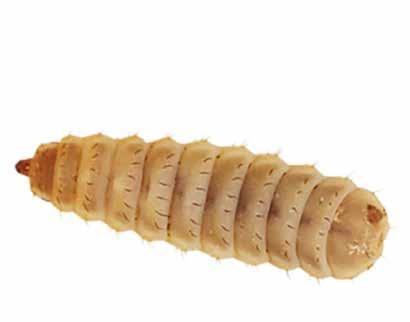
FishScience and Peregrine Livefoods


Peregrine Livefoods is a reptile wholesaler and insect breeding facility based in Epping Forest in the UK. It has been breeding insects since the 1980s and plays a pivotal role in the UK’s exotic pet industry. In February 2022 the company acquired FishScience and continues to work closely with Dr David Pool to improve and expand the business. Peregrine Livefoods is currently updating packaging and aims to launch a newly re-branded range of FishScience products in early 2023. FishScience will also be launching a range of new products as it continues to grow in the wider exotic pet industry
products also contain carotenoid-rich, natural ingredients such as carrot, paprika and chlorella algae to help boost the colouration of the fish. Garlic and omega oils are also excellent tools for maintaining fish vitality. Whilst many high-end fish foods will utilise these ingredients, FishScience carefully crafts every product so even foods aimed at beginner hobbyists contain expert ingredients.
Wheat germ based diet for Koi
Another product famed for its innovation is the FishScience ‘cold weather’ pond food. This is because the nutritional requirements of koi vary considerably throughout the year and thus, keepers should provide different diets. For example, protein is necessary for growth, but can only be used at warm water temperatures (over 15°C). Therefore, in summer, keepers feed high-protein food because the koi can use the protein to grow. Whereas, in winter, a lower protein food is sufficient because the koi are less active and not increasing in size.
Feeding protein-rich foods at low temperatures can even harm koi. Below approximately 10°C few if any of the proteins will be used for growth. Some may be used inefficiently to produce energy for movement etc, but the majority will pass straight through the fish. The resultant protein-rich waste can have adverse effects on the water quality as it decomposes. By formulating a wheat germ based diet that has a lower protein content, FishScience has produced a seasonal food that is much more suitable than the average pond pellet. It produces far less waste which helps maintain water quality throughout the winter and prevents any potentially harmful ammonia build up.
International Aquafeed - December 2022 | 37
The FishScience stand at Peregrine Livefoods' Open Day
The Art of Nutrition & Growth

Dibaq Solutions are specific programs designed to offer customers a range of services that only a leader in aquaculture can: nutrition for every need, continuous follow-up of fish quality not to mention technical and commercial assessment. All of this is the outcome of our international experience.
Dibaq AquaSafe® - an internal quality seal for high-value products








By only using the highest quality raw materials, micronutrients and functional components, Dibaq Aquaculture is a well respected company that specialises in the manufacture of specifically tailored products.

As a result, we have managed to go further and improve the quality of these products with this new seal, which will help our clients to achieve the maximum performance in their own production.

The AquaSafe concept also prioritises sustainability and the water safety of planet earth, as well as the health of the fish fed, stimulating their immune system, improving growth performance and protecting them against internal and external parasites.
Therefore, Dibaq AquaSafe is not only supporting and focusing on the safety of the planet - but on the health of its fish too.

Visit us: dibaqaquaculture.es
FISH FARMING TECHNOLOGY

Tech update
Shrimpbox
Thanks to this hardware developed by Atarraya INC shrimp farms can be installed anywhere on the planet, close to cities and disconnected from the natural environment, offering consumers full transparency. Shrimp from these farms will be produced ethically without using chemicals or antibiotics and can be consumed in a matter of hours after harvest. Attarraya has developed a biotechnology that allows one to produce shrimp without water exchange, without antibiotics, and without abusive labour practices. Shrimpbox mimics an ideal breeding environment and manages the complexity of the microbial community. It is a propriety software that makes remote management of production units possible, without the need for specialized personnel in the field. All relevant workflows are mapped to deal with data complexity. This also enables consistency and makes it easy to train and perform farming tasks and operations. Its engineering an automation allows for consistency of cultivation and economic viability in countries with high labour costs. Automated systems make it possible to remotely monitor water quality, regulate temperature and oxygenation and feed the shrimp.
39 | December 2022 - International Aquafeed
WASTE TO FEED
Seaweed
by CessCon and the Industrial Biotechnology Innovation Centre (IBioIC), Scotland, UK
In a global first, marine growth found on the legs, known as jackets, of decommissioned oil and gas platforms could form the basis of new novel livestock and aquaculture feeds, as researchers look at ways to reuse the material, which can include seaweed, mussels, and corals.
Environmentally responsible decommissioning company, CessCon Decom, has teamed up with researchers at Abertay University to explore how marine growth – a waste by-product of the decommissioning process – can be recycled and reused. In line with forecasts from Offshore Energies UK (OEUK) the feasibility study, which is supported by the Industrial Biotechnology

and algae brought to shore during decommissioning used for fish and animal feeds
FISH FARMING TECHNOLOGY 40 | December 2022 - Fish Farming Technology
Innovation Centre (IBioIC), could result in up to 40,000 tonnes of marine growth found on platform jackets being recycled over the next decade.
Current European regulations prohibit energy companies from leaving behind any part of a disused platform, stating that operators must return sites to a clean seabed. CessCon's decommissioning model already sees over 99 percent of decommissioned materials recycled, but the company is working towards 100 percent.
At the end of a platform's lifecycle, various types of marine species are found on the underwater jacket. Algae, seaweed, mussels, anemones, and hard and soft coral can be found at different depths, depending on environmental conditions in the water. One of the aims of the project is to gain a better understanding of the matter that is typically found, including the composition of fatty acids and proteins which could be turned into feed ingredients for other sectors.
Karen Seath, environment and regulatory affairs Director at CessCon, says, “As the North Sea oil and gas sector matures, the decommissioning sector has an incredibly important role to play in making sure that the parts of those installations which are no longer in use and are required to be brought to shore are disposed of safely and responsibly.
“Our process is built around circular economy principles and we have set an ambitious target to reach the point where 100 percent of the decommissioned materials brought onshore are reused, reconditioned, refurbished or recycled. At the moment, marine growth is typically sent to landfill or incinerated, but we recognise the opportunity to do more and use this waste to support the supply chains of other sectors.
“There is also ongoing debate as to whether the clean seabed policy is in fact the best way forward, environmentally and financially. In other global markets, for instance, we have seen decommissioned infrastructure converted to artificial reefs and left in the sea, thereby maintaining the underwater ecosystem that is created over the course of the platform's life. At this point in time, however, unless given dispensation, infrastructure in European waters at the end of its life must come out, and we aim to reuse and recycle the material in the most environmentally conscious way.”
The study follows a 2018 collaboration between Abertay University and Scottish fishing net manufacturer W&J Knox Ltd, which saw waste material collected on nets turned into livestock feed.
Boon-Seang Chu, lecturer in food science at Abertay University, says, “Our previous research has shown that the proteins and fatty acids, such as Omega-3, contained in aquaculture waste can become valuable feed ingredients for agriculture and aquaculture. This study is about understanding the nutritional composition of the marine growth retrieved from decommissioned rigs, whether onshore or offshore, and the feasibility of recovering proteins and fatty acids from the waste materials. The results of this work will help advise follow-on steps of the project.”
Liz Fletcher, director of business engagement at IBioIC, adds, “The collaboration between CessCon and Abertay University is a great example of an initiative that could see the waste from one industry turned into a valuable resource for another. Marine biomass is one of many inputs that can be used by the biotechnology sector to produce a range of products and materials that will ultimately help Scotland to reach its net zero goals.”

FISH FARMING TECHNOLOGY 41 | December 2022 - Fish Farming Technology LET’S GROW TOGETHER Temperature Adapted FeedsTM WINTER EDITION The Winter Edition enhances energy and protein utilization under cold water temperatures. Aller Aqua Winter Edition feeds are available for sea bass, sea bream and trout. THE RIGHT FEED FOR EVERY SEASON WWW.ALLER-AQUA.COM
TECHNOLOGY SHOWCASE

Innovations this month December 2022
In this month’s Product Showcase we address water quality in aquaculture, which is particularly crucial in RAS facilities, including a drain waste collection system, a smart monitoring system and a UV disinfection system, all to improve water quality in fish farming.
If you would like your product or service to appear in this section in a future edition of International Aquafeed and Fish Farming Technology magazine, then please contact us at editorial@perendale.co.uk

CHASING M2 Pro by Gael Force Marine CHASING M2 Pro is a professional underwater ROV designed for professional users and industrial applications. The M2 Pro has eight Vectored Thrusters layout which allows OMNI movement in all directions. Compared to the CHASING M2, the M2 Pro motor has been upgraded by 50 percent.
The Maximum speed is four Knots, depth is 150 metres (490 ft) and the maximum horizontal radius is 400 metres (1300 ft). M2 Pro supports AC and battery hybrid power supply to achieve unlimited battery life. Not only compatible with sophisticated attachments such as Grabber Claw, Floodlight and laser scaler etc, but also compatible with Control Console (High-brightness Screen), Docking station, USBL underwater positioning, 700Wh battery, Multibeam sonar, Auxiliary Camera and other M2 Pro Exclusive Enhanced Accessories.
CHASING M2 Pro offers a built-in 4K / 1080p and 12 megapixel EIS image stabilisation camera, 4000 lumens LED lights, removable battery and removable Micro SD memory card.
www.gaelforcemarine.co.uk
AKVA FNC8 by Akva Group
The AKVA FNC8 is a powerful remote net cleaning rig that can be operated via a handheld mobile console or from a control room.
The Flying Net Cleaner 8 (FNC8) has a cleaning efficiency that outperforms nearly every other option. It is built with standard ROV components that are easy to clean and disinfect. It also has several built-in auto features and advanced IP camera systems and sensors for complete monitoring during the entire cleaning process.
This ROV net cleaner is based on a patent-pending principle that ensures that the rig is in balance regardless of whether it cleans horizontally, vertically, or upside-down.


The cleaning rig is easy to operate via a handheld mobile console or from a control room. A new and intuitive positioning system helps you keep track of which parts of the pen that have been cleaned and automatically generates necessary documentation for each job.

www.akvagroup.com
FaunaGuard system by Ace Aquatec

The FaunaGuard system combines academically validated sound patterns with award winning acoustic transducers to create a temporary safe exclusion zone for marine wildlife during high energy events such as pile driving, underwater explosions or clearing oil spills.

Offshore construction activities like pile driving and underwater explosions can cause deafness and other serious physical harm to local marine life if precautions are not taken.
The FaunaGuard acoustic deterrents safely target the hearing ranges of specific species – such as seals, porpoises or turtles – to create temporary exclusion zones around the project site.
Any instance of a protected marine species being spotted inside a designated exclusion zone can cause costly unexpected shutdowns and delays until the site is cleared.
Ace Aquatec’s academically validated sound patterns target a variety of common species, and our acoustic hardware has withstood the harshest conditions in years of use in offshore and aquaculture industries.
https://aceaquatec.com https://aqfeed.info/e/1711

Learn more – Learn onsite Enroll in the 12-week Course FISH FARMING TECHNOLOGY Check out our website dedicated to fish farming technology
SHOWCASE
Landing MicroRAS by Landing Aquaculture

The MicroRAS is Landing Aquaculture’s answer to researchers’ needs for flexibility. Individual RAS systems are the perfect tool for digestibility trials, comparison of different environmental parameters and investigation on the variability between culture units, equipment comparisons and many other experiments.
Furthermore, MicroRAS features a wide array of sensors, automatic data logging and configurable software. This makes these systems highly autonomous, yet customisable. The system is designed to maintain the strictest water quality requirements for salmonids under the toughest conditions, in a compact footprint.
The MicroRAS includes a 500l cylindrical-conical dual drain fish tank, a drum filter with 50μm mesh and automatic backwash, MBBR biological filtration (750-1300g feed per day), oxygenation with oxygen cone, circulation pumps with automatic flow control, and much more. www.landingaquaculture.com


www.onlinemillingschool.com






Fish pump Pescamotion 50 by Faivre
The Pescamotion 50 is a fish pump available for the transfer of live fish up to 3000g (salmonids). The fish pump is the result of many years of research to reduce its weight to the minimum. Faivre have created one of the most lightweight fish pumps on the market with a weight of 190kg. The fish pump's propeller is directly driven by the motor. This results in a better reliability and a better efficiency than a traditional belt system. Their "Direct Drive" system is maintenance free. Faivre have worked on a powerful priming system, with a reduced priming factor under two to three times than a classic system. It is conceived with an automatic stop at the end of the cycle, making the work easier for the operator. A variable speed drive is standard on the Pescamotion 6" fish pumps. www.faivre.fr https://aqfeed.info/e/1712
fishfarmingtechnology.net International Aquafeed - December 2022 | 43
Aquaculture case study
Nutrition science for optimised global shrimp farming
Shrimp aquaculture is a clear opportunity in the animal protein production space as the world population continues to grow at a faster rate and natural resources are increasingly limited.
 By François Jégou, Aquaculture Technical Manager, ADM Animal Nutrition
By François Jégou, Aquaculture Technical Manager, ADM Animal Nutrition
Aquaculture currently supplies about half of the total seafood consumed globally and is expected to exceed volumes of wildcaught aqua species. Aqua producers must consider what kind of models, equipment, management strategies and feeds they should adopt to face daily and evolving challenges such as operational costs, disease risks, environmental hazards, consumer trends, and overall animal welfare.
Most significantly, environmental stressors, pathogens, and opportunistic diseases are present everywhere in aquaculture. With the increasing global threat on antimicrobial resistance, achieving efficient and profitable productions becomes challenging – though critical – for producers. Therefore, researchers, producers, and feed mills are focused on ways to help aquaculture species better perform within infectious and physiological pressures at all levels.
Functional Feeds for Early-Stage Shrimp
Focusing on the early life stages at the hatchery and nursery levels in aquaculture species is of great importance to producers as early nutrition has a significant role in the overall life cycle performance. While represented only in small volumes, early feeding stages are among the main inputs that have immediate and long-term effects up to late grow-out stages. Nutrition from these early stages is crucial Figure 1:

CS
44 | December 2022 - International Aquafeed
Figure 3:












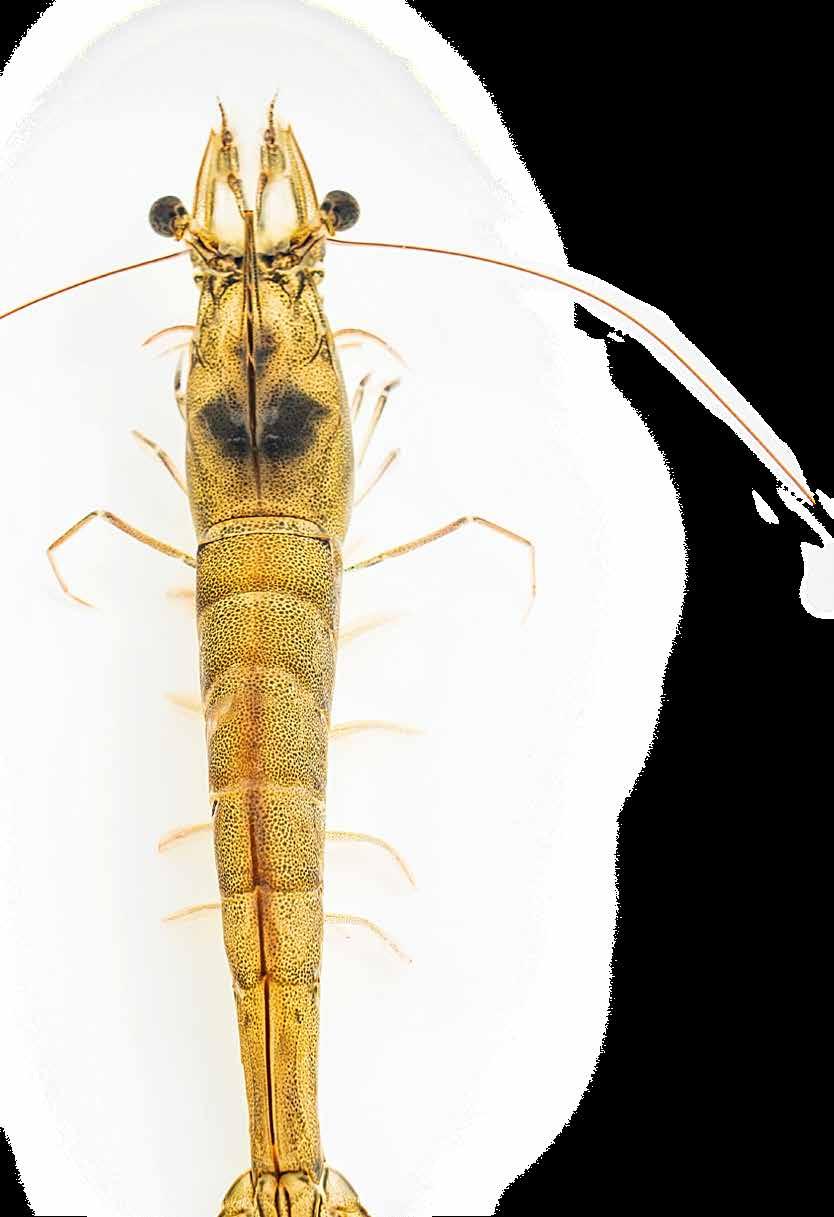
for effective and harmonious organ development thus final quality at harvest. Functional feeds at these early stages also offer synergistic opportunities to reduce the adverse effects related to environmental conditions, stressors as well as health issues.
















































































Figure 2:
CS International Aquafeed - December 2022 | 45
For example, many infectious diseases have emerged and hampered the shrimp industry growth, including White Spot Syndrome Virus (WSSV), bacterial Acute Hepatopancreatic Necrosis Disease (AHPND) also known as Early Mortality Syndrome (EMS), as well as microsporidian Eneterocytozoon hepatopenaei (EHP). As invertebrates, shrimp lack an adaptive immune system and may not be vaccinated against infectious diseases, therefore they fully rely on their innate immunity. This innate immunity is quite effective and comprises a pathogen associated molecular pattern (PAMP) recognition system that triggers cellular and humoral immune responses that lead to encapsulation, phagocytosis or killing of the invading intruder.
Novel Yeast Enhances Shrimp Immune Function
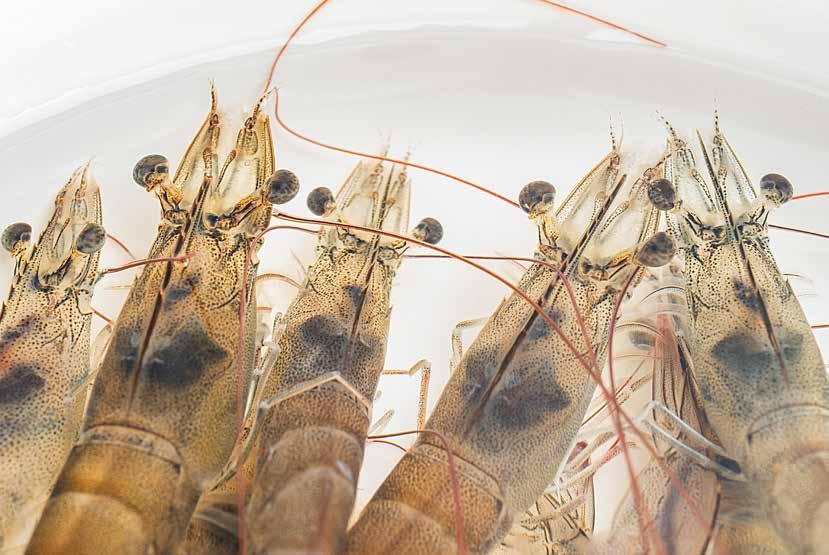

Interestingly, the shrimp immune system may be supported by external factors brought directly from specifically formulated feed containing the novel yeast, Pichia guilliermondii. Recent studies have shown how the inactivated yeast is leveraged in aqua feeds and used to alleviate disease stress through a modulating effect on gut microbiota and immune functions. Inactivated P. guilliermondii has demonstrated these effects through multiple in vivo challenge tests involving Vibrio intramuscular injection, AHPND immersion, as well as WSSV oral infection. Results
from these tests showed approximately 80% higher survival rates in both latter challenge tests compared to the inoculated control (Fig. 1), whereas immunological figures resulted in more than 50% higher hemolymph concentrations in granular hemocytes – highly effective immune cells equivalent to vertebrates’ granulocytes. Additionally, the tests showed a subsequent 70% reduction in Vibrio hemolymph concentrations (Fig. 2,3). Adding P. guilliermondii to feed at the same low inclusion rate of 0.1% as in the challenge tests showed growth improvement of 10% in typical, nonspecific challenged field conditions. Ultimately, inactivated whole yeast P. guilliermondii feed supplementation offers unique attributes when used in shrimp culture daily management, showing potential to support growth while helping shrimp to cope with physiological and health challenges more effectively. Additionally, studies show that P. guilliermondii yeast has the potential to further support organisms with adaptive immune functions, opening opportunities for fishspecific formulations as well. AquaTrax is an innovative and cost-effective functional feed additive that leverages P. guilliermondii yeast to support immune response and gut microbiota. As the latest addition to ADM’s aquaculture and feed additives portfolio, AquaTrax contributes to reduce the impact of health challenges in aqua species and helps improve aquaculture performance.
CS 46 | December 2022 - International Aquafeed
The Future Awaits
Built on partnership and innovation, Wenger is providing more opportunities for client success.
For almost a century, Wenger has delivered extrusion-based innovations to our partners. We’ve worked alongside you to develop new processing solutions and better products, providing our industry-leading expertise and ongoing support every step of the way.

We don’t plan on stopping any time soon.
Wenger’s global food processing family is growing, and we look forward to the exciting opportunities that lie ahead. We will continue to deliver even more innovations and technologies to benefit companies that share our vision of tomorrow.



Wenger.com
Our

In addition to our headquarters in Diepholz, GEPRO has other locations around the world for your best possible service. Consistency and a high degree of reliability are essential.
Already some years ago our logo appeared in a new design. This is now also incorporated in our product portfolio. Consistency, innovation and a high degree of reliability are essential.
FISH FARMING TECHNOLOGY
AQUAFEED
GEPRO has developed into a constant and successful player in the aquafeed and the petfood industry for more than 50-year history and always meet challenges with innovative solutions.
head office and production site is located in Diepholz, Lower Saxony - in the immediate vicinity of the largest poultry production and processing facilities in Germany.
www.ge-pro.de Contact aqua@anpario.com Want An Extra US$1,000 Per Hectare? 77719601 47 | December 2022 - Fish Farming Technology
Industry Events


Status updates for industry events amidst global effects of COVID-19



2022
2022 December 13-15
AlgaEurope 2022 Rome, Italy https://algaeurope.org

2023
2023 January 24-26
IPPE Atlanta, USA www.ippexpo.org
2023 February 8-9
Seagriculture Conference Asia-Pacific Online https://seagriculture-asiapacific.com
7 7th Annual Aquafeed Extrusion Conference Bangkok, Thailand https://aqfeed.info/e/1697






The 7th Annual Aqua Feed Extrusion Conference coorganised by VIV, International Aquafeed and Fish Farming Technology magazine and Dr Mian Riaz of Texas A&M University is once again taking place March 7th, 2023 as part of VIV Asia.

This rendition of the conference will specialise in extrusion and the related equipment for aquatic feeds. The one-day conference will feature a variety of industry expert speakers delivering innovative presentations on how users can make the best use of their extrusion machinery and aqua feed systems.
There are few speaking slots still available. Interested companies can email to Dr Mian Riaz (mnriaz@tamu.edu) regarding the opportunity to speak at this conference. For sponsorship opportunities, companies can email Tuti Tan (tutit@perendale.co.uk).
Programme:
Welcome- Roel Schoenmaker and Roger Gilbert, VIV and International Aquafeed Magazine, UK

How to Select and Extruder for Making Aqua Feed - Dr. Mian Riaz, Texas A&M University, USA
Ultra-Fine Grinding for Aquatic Feed - Phil Erickson, Reynolds Engineering & Equipment, Inc. USA
Advanced Techniques for Extruded Shrimp FeedMichel Bauer Pereira, Andritz, Denmark
Making Floating and Sinking Feed Using Twin Screw Technology - Hadrien Delemazure, Clextral, France
Premium ExtrudedShrimp Feeds - Dana Nelson, ExtruTech, USA
Selecting the Right Dryer for Fish and Shrimp FeedAlbert Wang, CPM, Asia
Application of Digitisation and Automation in Modern Aqua Plants - TBA, Buhler, Switzerland

Aqua Feed Coating System - Caleb D. Townsend, APEC, USA


7
Aquatic Asia Bangkok, Thailand
15-16
AQUAFArm Pordenone, Italy www.aquafarm.show 23-26
Aquaculture America 2023 New Orleans, Louisiana, USA www.was.org
2023 march
7
Aquatic Asia 2021 Bangkok, Thailand aqfeed.info/e/1696
https://aquafeed.co.uk/events/ aquatic-asia-2023/

8-10
VIV Asia 2023 Nonthaburi, Thailand www.vivasia.nl 10 build my Feedmill Conference Bangkok, Thailand mymag.info/e/1326
28 - 30
AquaFuture Santiago, Spain
https://en.aquafuturespain.com/ 2023 April 18-21
LAQUA 23 Panama City, Panama www.was.org 2023 may 29-1
World Aquaculture 2023 Darwin, Australia www.was.org
Darwin is proud to be hosting World Aquaculture for Australia for the fi rst time since 2014.
This annual event will incorporate the Australiasian Aquaculture industry and will see several thousand attendess from around the world converge on the city of Darwin
Contributions to developing new and existing ideas to stimulate this vital industry are welcome. With almost half of the world’s consumption of seafood coming from farms, aquaculture is playing an increasingly important role in meeting the challenge of global food security.
World Aquaculture 2023 (WA2023) will be an opportunity for the international aquaculture community - academics, industry researchers, market and industry analysts, government offi cials, policy makers and industry representatives to present their work and exchange ideas and develop a vision for the future of the aquaculture industry as we focus on the theme of “Supporting Strength in Aquaculture”
An event not to be missed - WA2023 will offer a chance to gauge the sector’s progress, whilst we discuss and debate the issues, ideas, mechanisms and hands-on practical approaches towards building a better industry. In addition there will be ample opportunity to network during both structured and free-fl owing events.
On behalf of the WA2023 Steering Committee, we look forward to seeing you in Darwin.
2023 June
8-10
VIV Turkey Istanbul, Turkey www.vivturkey.com 21-22
Seagriculture Conference EU 2023 Trondheim, Norway https://seagriculture.eu
☑ See The International Aquafeed team at this event 48 | December 2022 - International Aquafeed





































































AQUA FARM
AquaFarm is an international conference and trade show held annually for the aquaculture, alga culture, shellfish farming and the fishing industry in north-east Italy servicing the wider Adriatic region. Besides aquaculture it offers growing dedicated areas for related vertical farming and algae technologies.


As feed is by far the most dominant economic aspect in the farming of fish species, it is increasingly clear that its quality is essential for achieving productivity, product quality and sustainability; and that is what this event focused on.
International Aquafeed was invited to chair the ‘Fish Feed Seminar’ on the first day which focused on sustainability, the microbiome of fishes, replacement diets, circularity in fish feeds, alternative proteins and fortified feed for fortified products.

The presentations took delegates of a tour of the innovation and practices developing within fish farming which are having significant impact.
Speakers included Professor Emilio Tibaldi, from the University
of deli Study di Udine, who presented results from the Ager2SuSHIN project for sustainable and innovative fish feeds over three-year that is researching new ingredients to be used in feed for the main fish species farmed in Italy. The goal is to improve nutrition with the introduction of innovative diets for sea bass, sea bream and trout.
Anders Ostergaard, the technical and sustainability advisor for BioFarm Baltic of Biomar followed up with a presentation on sustainability in aquafeeds.
Other speakers included Federico Moroni a researcher from the University deli Study dell’Insubria on the use of brewer’s yeast as a feed ingredient and Robert Tillner the project manager for Aller Aqua on algae-based feeds for trout.
The session concluded with a presentation from Luciano Foglio, a researcher from the Institute Sperimentale Italiano Lazzaro Spallanzani on the results of a AquaTech4Feed project that looks at sustainable aquaculture technologies to produce
Industry Events
On May 25, 2022 the 5th three-day AquaFarm event took place in the Pordenone Exhibition Centre, north-east of Venice, Italy. The 6th Aquafarm 2023 event will take place next month from February 15-16, 2023
50 | December 2022 - International Aquafeed
innovative feeds that can improve fish stocks.
The aim of AquaTech4Feed is to formulate novel fish feed from alternative proteinaceous biomass sources, such as algae, duckweed, insects and microbiomes (bioflocs) in order to improve fish production and product quality. AquaTech4Feed will also develop novel, sustainable aquaculture production process utilizing aquaculture wastewater and wastes.
Rescheduling for 2023
The lifting of pandemic restrictions earlier this year failed to allow AquaFarm 2022 to be held at its normal time in midFebruary which meant that the event was delayed until May 2527, 2022, although still held in its usual venue of the Pordenone Exhibition Centre in Pordenone.
It accommodated an additional two events, namely NovelFarm which looks at vertical farming and soilless cultivation and AlgaeFarm dedicated to technologies and applications in algaculture. Next year’s event will be back to its original month and will be held from February 15-16, 2023.
A full agenda
AquaFarm provided seven seminars ranging from ‘The Next Generation Aquaculture’ to workshops in a combination of English, English/Italian and Italian languages. The former seminar was moderated by TV host of LineaBlu, Rai, Fablo Gallo.


Renato Pujatti, President of the Pordenone Fiere, opened the conference and the exposition along with dignitaries from the local municipality, Chamber of Commerce and representatives from the Veneto Region and the Friuli Venezia Ciulia Region.



A two-hour ‘Next Generation’ seminar included presentations from: Charlene Vitcheva, the General Director of the Department of Maritime Affairs and Fisheries from the European Union; Gianmorco Centinaio, vice-minister from the Ministry of Agriculture, Food and Forestry Policies; Marco Dreosto, MEP and member of the Commission for the Environment, Public Health and Food safety and Vannia Gave the State Secretary from the Ministry of Ecological Transition in Italy.
Keynotes were given by Giovanna Marino, research director for ISPRSA on allocation of marine areas for aquaculture and Domitilla Pulcini, researcher for CREA on Italian aquaculture its numbers and trends over the past several years.

Italian aquaculture produces 11.3 percent of total EU production of farmed fish, is the fourth ranking country within the EU for production and generates 11.5 percent of total aquaculture income within the EU.
An interesting observation made by speakers was the growing importance of gathering data as it: Helps to identify problems early; empowers you to make informed decisions; helps with your strategy and supports funding options.
A panel discussion concluded the session.
The Exhibition
AquaFarm offers Italian and neighbouring aquaculture industries from across the region an opportunity to come together to not only to take advantage of a plethora of short, keenly focused seminars that tackle some of the most pressing issues facing the industry but to enjoy learning about the latest in fish farming technologies.
AquaFarm also provides an opportunity for visitors to connect with colleagues and client companies and learn about new technologies from the 75-plus companies that exhibited at the event.
Moderated by Italian TV host of Linea Blu Rai, Fablo Gallo (left) hosts the panel discussion following keynote presentations for ‘The Next Generation of Aquaculture’
Rosa Federica Crass (left) received the Italian Coast Guard’s ‘Artemide’ Award from Valeria Menenti
Riccardo Rigillo
Renato Pujatti, President of the Pordenone Fiere, Pondenone, Italy
International Aquafeed - December 2022 | 51
Professor Emilio Tibaldi, University of deli Study di Udine, Italy
EXPO AQUA FARM


PTAqua of Ireland was promoting its Otohime range of larval fish diets which are manufactured to Japanese specifications and recognised as one of the world’s best larval finfish diets. Diets contain krillmeal, they are easily digestible while holding ehri shape in water and are produced at low temperature to protect vitamin stability and physiochemical properties. Diets contain Aquate, an Alltech premix, reinforces the function of the microbiotica in the digestive systems, enhanced nutrient utilisation and promotes gastrointestinal integrity
Ittinsect, a zero-ocean impact aquafeed by this Italian company promoted Natura Steady T which is a cold extruded trout fattening feed for fish ranging between five and 60g with pellet sizes from 1.5mm to 2.5mm. Ingredients include enriched insect meal, fishmeal, soyprotein concentrate, wheat flour, fish oil and chicken meal in addition to other materials. The company says that each kg of feed generates approximately 0.9kg of CO2 equivalent which is 10 percent less than a comparable traditional feed



Companies such as Vega of Italy and Germany showed a range of sophisticated feeding systems associated with recirculation systems while Belgium’s LSAqua highlighted its sustainable feed practices - which focuses on locally sourced feed ingredients - enhance growth performance and disease resistance. It is a supplier to Belgian Omegabaars which was one of the first and biggest sustainable fish farming projects in





Fish Management Systems which is owned by Yelo Ltd of Northern Ireland was promoting its in-water, in-line freshwater and seawater electric stun systems which company director Dr Martin O’Farrell says is suitable for large scale aquaculture operations involving fish transfer, vaccination, grading and stripping plus stunning at time of harvest and sea lice removal treatments

Xylem

IMV’s QuickSorter
sorting machine that can process more than 100 litres of eggs per hour with higher accuracy in eliminating dead eggs, higher accuracy in egg counting, less mortality post sorting and easy to wash and disinfect

Industry Events
Yoni Radzinnski, director at FISA Fibras Industries SA from Peru
Pier Antonio Salvador
Speaker Dr Robert Tillner (centre), is the product manager for Aller Aqua’s German research company
Daniele Zaattarelli (left) regional sales manager for Italy and south-eastern Europe with colleague Andrea Coppin of IMV Technologies
Europe
Alessandro Romano (left), DEO and founder, Filippo Morsiani COO, Andrea D’Addazio CTO and R&D Director Paolina Scarponi of Ittinsect promoting their range of insect-based aquafeeds
On the Biomar stand with Burcu Karakas Basse, marketing manager for the EMEA Division and colleagues
of Germany had on display its Wedeco ozone system for improving water quality in trout hatcheries. It highlighted a trial carried out at the Muritz Plau GmbH fresh-water trout fish hatchery in Germany where results indicate a saving of over 4600 Euros could be made per year through increased productivity and lower mortality offering the operator a payback period of 3.5 years
Secma Cabon of France exhibited its MultyWays automated feeding system that evenly distributes feed across the water surface. It’s computer controlled allowing for frequent daily feeding schedules in multiple ponds. The manufacturer says its enhanced the FCR while improving water quality of both the ponds and the discharge water. It helps to maintain pellet integrity with no fines
52 | December 2022 - International Aquafeed
egg
EXTRUDER AND EXPANDER TECHNOLOGY YOU CAN TRUST
The Extruder AXT 220
The Almex AXT 220 Single screw extruder consists of a robust base frame that supports the main motor, gearbox, and extruder barrel. This frame can be executed in mild steel or stainless steel for extended lifetime. The direct coupled inline geared motor ensures the optimal energy efficiency.
Capacity: 10,0 - 12,0 t/h (indication only)

Scan
for
the QR-Code
more information www.almex.nl
WHY EXTRUDE? www.almex.nl To make maximum use of the nutritional values of the raw materials To achieve a high-quality and consistent end product To minimise the effect of any anti nutritional factors To realize production within all product-specific guidelines
2023 AQUA FARM
Energy and water resources are among the main topics of the next edition
Only a few months to the sixth edition of AquaFarm, the main exhibition on aquaculture, shellfish farming and sustainable fishing of the Mediterranean basin and Southern Europe, organised by Pordenone Fiere in co-operation with API (Italian fish farmers association) and AMA (Mediterranean fish farmers association), taking place from February 15-16.
The event brings together the entire production and trade chain of the aquaculture sector: according to FAO, fish and shellfish farming represent today one of the most strategically important food production activities worldwide, one of the very few that can provide healthy and nutritious food for the growing global population without affecting ecosystems. The exhibition area will be combined with a rich programme of conferences and meetings dedicated to the most important topics in Research & Innovation fields. Among the issues, there are two major challenges: the climate
change, including the relevant water deficit, and the energy issue. The conference programme is complemented by special events and workshops organised by some of the largest European-funded research programmes, featuring Italian and international institutions, universities and companies.
"AquaFarm has already confirmed to have overcome the pandemic shock, considering that the last edition was visited by more than 2000 professionals from 40 countries”, affirms Renato Pujatti, President of Pordenone Fiere. "The next edition marks the beginning of a new phase - in an era that is perhaps even more uncertain - but aware to setting the stage for a sector that is crucial for the short, medium, and long term future of the planet."
Team Scotland gears up for Aqua Nor
2023
A Scottish pavilion will return to Aqua Nor next summer, showcasing the nation's blue economy expertise and offering aquaculture supply chain companies a chance to do business on an international stage once again.

From 22 to 24 August 2023, a Team Scotland partnership comprising the Sustainable Aquaculture Innovation Centre (SAIC), Highlands and Islands Enterprise (HIE), Salmon Scotland and Marine Scotland will provide a platform for Scottish businesses to showcase expertise, products and services at the global aquaculture event in Trondheim, Norway.
Next year's trade show will be the first to take place again fully in-person since the Covid-19 pandemic and with international travel back on the agenda, significantly more delegates are expected in 2023. The three-day event is estimated to draw around 25,000 visitors from more than 75 nations.

Scottish businesses active in the aquaculture supply chain are invited to join the pavilion and take advantage of
the chance to be part of the collaborative delegation with support through shared exhibition space, meeting rooms, presentation facilities and other activities.
Aqua Nor is the world's largest aquaculture technology exhibition, bringing together the latest products, processes and services across finfish, shellfish and, increasingly, seaweed species. First held in 1979, all the world's major aquaculture nations attend. A hybrid version of the three-day event in 2021 attracted more than 16,500 visitors and a further 8000 participants online.
The Scottish collective represents the first official pavilion from the country at Aqua Nor since 2017. Feedback from exhibitors who joined the previous Team Scotland stand was overwhelmingly positive, reporting encouraging levels of interest generated by the collective presence.
At last year's event, Scotland was represented through a digital exhibition and, in 2019, SAIC hosted a separate stand and events on behalf of its network, alongside a Scottish supply chain workshop hosted by Scottish Government Cabinet Secretary Fergus Ewing.

54 | December 2022 - International Aquafeed



The complete Feed to Food global trade show in Asia Co-located with www.vivasia.nl New venue! VIV ASIA 2023 BANGKOK, THAILAND 8-10 MARCH WWW.VIV.NET Organized by Supported by
AQUA EXPO 2022 AQUA EXPO 2022
The inauguration of Aqua Expo 2022 was held on October 17 in the Presidents room of the Guayaquil Convention Center and was attended by Julio José Prado, Minister of Production, Foreign Trade, Investment and Fisheries; Susan Gonzalez, Prefect of the Province of Guayas; Carola Ríos, General Director of the National Customs Service of Ecuador, SENAE; Carlos Miranda, President of the Board of Directors of the National Chamber of Aquaculture and José Antonio Camposano, Executive President of the National Chamber of Aquacultur, Ecuador. Aqua Expo 2022 received more than 10,000 people at its trade fair and congress during the largest event in its history. Aqua Expo 2022 is the most important technical commercial Aquaculture event on the continent, which has been held for more than 20 years in Ecuador; organised by the National Ecuadorian Chamber of Aquaculture, with the main objective of promoting knowledge and innovation of the aquaculture community, on a global scale.
“The National Chamber of Aquaculture has worked hard for decades to build a platform for the dissemination of technical knowledge and innovation in shrimp farming, as well as the trade fair with the greatest impact on the continent. The world has set its sights on Ecuador for being a leader in innovation and sustainability in captive shrimp farming for more than 50 years”
José Antonio Camposano, Executive President of the National Chamber of Aquaculture.

During the ceremony, recognition was given to 3 leaders linked to the aquaculture sector who have stood out for their contribution to the union and trajectory. The winners were: Riccardo Carlo Delfini Mechelli, Attilio Eduardo Cástano Baquerizo, Francisco Pons Neumane
The event was sponsored by 8 companies: Agrantech, BiofortSP, BioMar, Cargill, DSM, Nicovita, Skretting, and USSEC; counted media partners such as: AquaFeed, Panorama Acuícola and Infofish. The commercial exhibition had an area of around 7,000 square meters, where more than 200 stands were
set up. National and foreign companies showed the innovation of the industry, through products and services for all the links of the aquaculture chain. About 15,000 people visited the trade fair.

The Aqua Expo 2022 congress had a technical program that was developed in two rooms simultaneously, addressing issues of animal health, nutrition and feed management, quality and safety, efficient production processes, use of new technologies and shrimp market projections. More than 60 national and foreign speakers will participate in exhibitions and panels.
“I am very impressed by the technological innovation, by the quality of the presentation of the stands, of the conferences, of the cordiality with which we have been received. So, I'm really more than satisfied. You say that it is the most important shrimp meeting on the continent and I, who travel a lot, would say that they are the first worldwide.” Carlos Beltrán - Speaker AQUA EXPO
The most important shrimp technical event on the continent was held from October 17 to 20 at the Guayaquil Convention Center, it was organized by the National Chamber of Aquaculture, an entity that through its social networks thanked its attendees for the success achieved this year.
56 | December 2022 - International Aquafeed


www.tsc-silos.com Check out our references: “By building some of the cells one above the other, the maximum flexibility has been raised to an even higher level.” STORE SMART STORE SQUARE Location: Moudon, Switzerland Product: Grains and seeds Capacity 2.600 m³ Bins 51 Height 32 m Width 7,5 m Length 19,9 m International Aquafeed - December 2022 | 57
World Aquaculture 2022 Singapore and future events

WORLD AQUACULTURE Singapore 2022 was held from 29 Nov - 2 Dec in Singapore with involvement from countries throughout the Asian-Pacific region and around the world. Aquaculture is rapidly growing in the Asian-Pacific region and increasingly being integrated into the Singapore food systems and International Aquafeed was fortunate to attend the event. Readers can expect a detailed report in the next edition of our magazine.
AQUACULTURE AMERICA 2023 New Orleans, Louisiana, USA Feb. 23 – 26, 2023
Food for the Future - Aquaculture America 2023 ConferenceAquaculture professionals return to NOLA in February 2023 for the largest conference since the start of the pandemic.
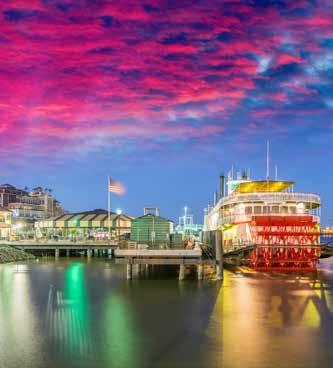
Abstract submission is now open to reserve your spot in the exciting speaker line up and to present the latest and greatest research in the field of aquaculture. Students are particularly encouraged to submit an abstract and participate in the many student-centred activities and networking opportunities at the conference. Join the national and international aquaculture community for a long weekend of exciting events in the Big Easy!
LATIN AMERICA & CARIBBEAN AQUACULTURE 2023 – LACQUA23 – Panama, April 18-21, 2023

LACQUA23 will be the 2023 Annual meeting of the Latin American & Caribbean Chapter of WAS. Following upon the previous successful LACQUA meetings, LACQUA23 will bring back international attention to the aquaculture industry of Panama and Latin America. LACQUA23 will be held in Panama City, the capital of Panama. Panama is a cosmopolitan, dynamic city, where the modern and the traditional come together to create a cheerful and relaxed atmosphere. Panama, the hub of the Americas, makes a great venue for LACQUA23.
The aquaculture sector of Panama (fish and shrimp together) is one of the main export items of the country. The most cultivated species in Panama are fish (tilapia, cobia, pámpano) and shrimp.
58 | December 2022 - International Aquafeed
WORLD AQUACULTURE 2023 Darwin, Northern Territories, Australia May 29 – June 1, 2023
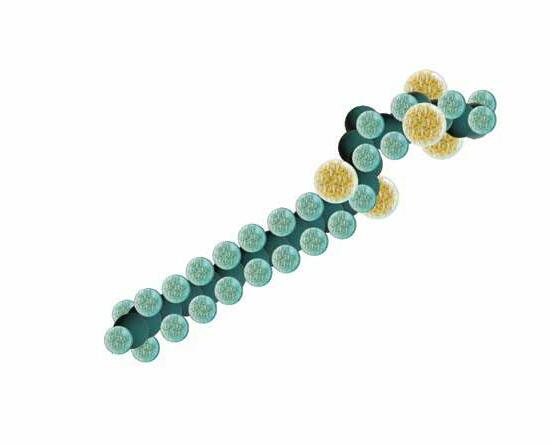

Darwin is proud to be hosting World Aquaculture for Australia for the first time since 2014.
This annual event will incorporate the Australasian Aquaculture industry and will see several thousand attendees from around the world converge on the city of Darwin.

Contributions to developing new and existing ideas to stimulate this vital industry are welcome. With almost half of the world's consumption of seafood coming from farms, aquaculture is playing an increasingly important role in meeting the challenge of global food security.

World Aquaculture 2023 (WA2023) will be an opportunity for the international aquaculture community - academics, industry researchers, market and industry analysts, government officials, policy makers and industry representatives to present their work and exchange ideas and develop a vision for the future of the aquaculture industry as we focus on the theme of 'Supporting Strength in Aquaculture'.
An event not to be missed - WA2023 will offer a chance to gauge the sector's progress, whilst we discuss and debate the issues, ideas, mechanisms, and hands-on practical approaches
towards building a better industry. In addition, there will be ample opportunity to network during both structured and freeflowing events.
AFRICAN AQUACULTURE 2023 – AFRAQ23 –Lusaka, Zambia – November 13 – 16, 2023
The 2nd Annual International Conference & Exposition of the African Chapter of the World Aquaculture Society (AFRAQ2023). Zambia, being one of the fastest growing aquaculture producer countries in Africa will host the largest aquaculture conference and trade show in Africa. Thousands of delegates from around the world are expected to converge in the bustling and glittering capital city, Lusaka to celebrate achievements on all aspects of aquaculture development in Africa, but also to find solutions to some of the challenges hampering the growth of the sector, and to explore new opportunities. AFRA2023 will undoubtedly provide numerous networking and collaboration opportunities.
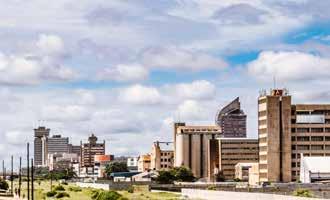
TAKE A CLOSER LOOK AT AQUALYSO IF YOU THINK ALL LYSOPHOSPHOLIPIDS ARE THE SAME... Dedicated production platform Superior product specifications Scientifically proven mode-of-actions Hands-on application expertise Effective feed cost reduction More sustainable production ADISSEO, LEADER IN LYSOPHOSPHOLIPID SOLUTIONS FOR AQUACULTURE www.adisseo.com International Aquafeed - December 2022 | 59
Aerators

Faivre + 33 3idah 81 84 01 32 www.faivre.fr PROFILE: aqfeed.info/e/1603 Air

Kaeser Kompressoren +49 9561 6400 www.kaeser.com
PROFILE: aqfeed.info/e/1035
Additives

Dibaq +34 921 574 286 https://dibaqacuicultura.es PROFILE: aqfeed.info/e/1604 DSM +43 2782 8030 www.dsm.com PROFILE: aqfeed.info/e/1605 Evonik +49 618 1596785 www.evonik.com PROFILE: aqfeed.info/e/1606 Jefo +1 450 799 2000 https://jefo.ca PROFILE: aqfeed.info/e/1607 Liptosa +34 902 157711 www.liptosa.com PROFILE: aqfeed.info/e/1608 ORFFA +32 479 50 09 08 https://orffa.com PROFILE: aqfeed.info/e/1278




Phibro +972 4 629 1833 www.phibro-aqua.com PROFILE: aqfeed.info/e/1609
SAS Laboratories Phode +33 5 63 77 80 60 www.phode.com PROFILE: aqfeed.info/e/1644

Analysis
R-Biopharm +44 141 945 2924 www.r-biopharm.com PROFILE: aqfeed.info/e/1645 Romer Labs +43 2272 6153310 www.romerlabs.com PROFILE: aqfeed.info/e/1610






Evonik +49 618 1596785 www.evonik.com PROFILE: aqfeed.info/e/1606


+32 51723128 www.sce.be PROFILE: aqfeed.info/e/1611
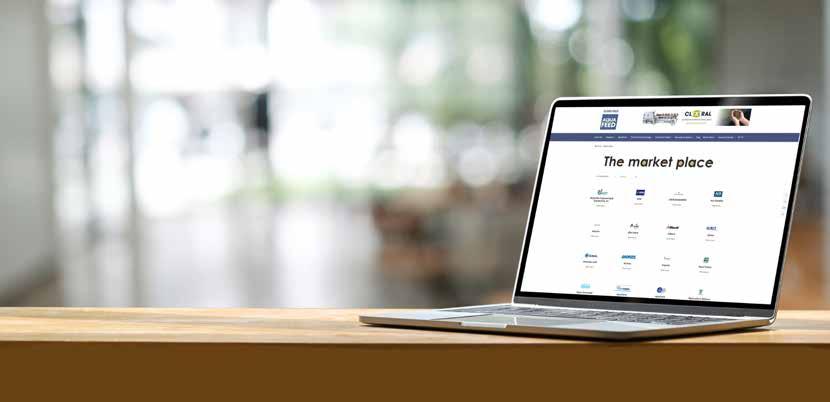









products
acids
Amino
Bulk storage
Engineering
Symaga +34
43 04 www.symaga.com
TSC Silos +31
Conveyors Cablevey Conveyors +1
Vigan Enginnering +32 67 89 50 41 www.vigan.com aqfeed.info/e/1648 Colour sorters Bühler AG +41 71 955 11 11 www.buhlergroup.com PROFILE: aqfeed.info/e/1614 Satake +81 82 420 8560 www.satake-group.com Computer software Inteqnion +31 543 49 44 66 www.inteqnion.com PROFILE: aqfeed.info/e/1277 Coolers & driers Bühler AG +41 71 955 11 11 www.buhlergroup.com PROFILE: aqfeed.info/e/1614 Consergra s.l +34 938 772207 www.consergra.com aqfeed.info/e/1650 FAMSUN +86 514 85828888 www.famsungroup.com PROFILE: aqfeed.info/e/1034 FrigorTec GmbH +49 7520 91482-0 www.frigortec.com aqfeed.info/e/1652 IDAH +866 39 902701 www.idah.com PROFILE: aqfeed.info/e/1615 60 | December 2022 - International Aquafeed Welcome to the market place, where you will find suppliers of products and services to the industry - with help from our friends at The International Aquafeed Directory (published by Turret Group) aquafeed.co.uk/web/companies
Silo Construction &
91 726
aqfeed.info/e/1647
543 473979 www.tsc-silos.com PROFILE: aqfeed.info/e/1612
641 673 8451 https://cablevey.com PROFILE: aqfeed.info/e/1613
Elevator
aqfeed.info/e/1655 4B has the world's largest range of bucket elevator components, leading the field in elevator bucket and elevator bolt design and manufacturing the highest quality forged conveyor chains and elevator belting. Our electronics division specialises in level controls, intelligent sensors and safety control systems for bucket elevators and conveyors. 4B components prevent costly downtime and minimize the risk of explosions in hazardous areas. With 130 years of engineering experience in the bulk handling industry and subsidiaries on all continents along with a worldwide network of distributors, 4B can provide practical solutions for any application no matter the location. aqfeed.info/e/1655

Yemmak +90 266 733 83 63 www.yemmak.com PROFILE: aqfeed.info/e/1617
Zheng Chang +86 2164184200 www.zhengchang.com PROFILE: aqfeed.info/e/1623

Feed and ingredients
Adisseo +33 1 46 747104 www.adisseo.com PROFILE: aqfeed.info/e/1624
Aller Aqua +45 70 22 19 10 www.aller-aqua.com PROFILE: aqfeed.info/e/961
Alltech +44 1780 764512 www.alltechcoppens.com PROFILE: aqfeed.info/e/1625





Anpario +44 1909 537 380 www.anpario.com PROFILE: aqfeed.info/e/1626

Biorigin www.biorigin.net PROFILE: aqfeed.info/e/1627
GePro +49 54415 925252 www.ge-pro.de aqfeed.info/e/1656
Grupo Dibaq +34 921 574 286 www.dibaqacuicultura.es PROFILE: aqfeed.info/e/1604
Dibaq Aquaculture is a Spanish company, founded in 1987. From their beginnings, they have been strongly involved in the history of Mediterranean aquaculture, then just beginning to be a productive reality with an increasingly promising future.



Dibaq Aquaculture’s vocation for participating in international markets has permitted their rapid growth, earning them the recognition of the sector in many countries considered excellent references in aquiculture.
As a dynamic, forward-looking company, Dibaq Aquaculture have always spent an important slice of their resources and development, to continually improve their farm-fish food.

Dibaq Aquaculture’s main principle is to cooperate with the client, to achieve our common goals. The experience of the professionals that make up their human teams is their best guarantee to successfully face up to the new challenges and new opportunities arising in aquaculture. aqfeed.info/e/1604
Feed Mill
Jefo +1 450 799 2000 https://jefo.ca PROFILE: aqfeed.info/e/1607




Liptosa +34 902 15 77 11 www.liptoaqua.com PROFILE: aqfeed.info/e/1608
Phileo (Lesaffre animal care) +33 3 20 81 61 00 www.lesaffre.fr

PROFILE: aqfeed.info/e/1629
TekPro +44 1692 403403 www.tekpro.com


PROFILE: aqfeed.info/e/1631
Van Aarsen International +31 475 579 444 www.aarsen.com PROFILE: aqfeed.info/e/1632




Fish
Faivre + 33 3 81 84 01 32 www.faivre.fr PROFILE: aqfeed.info/e/1603
Fish
Faivre + 33 3 81 84 01 32 www.faivre.fr PROFILE: aqfeed.info/e/1603
Fish
Faivre + 33 3 81 84 01 32 www.faivre.fr PROFILE: aqfeed.info/e/1603 Grinders





Grand Fish Feed +202 20 650018 www.grand-aqua.com PROFILE: aqfeed.info/e/1628
Grand Fish Feed +202 20 650018



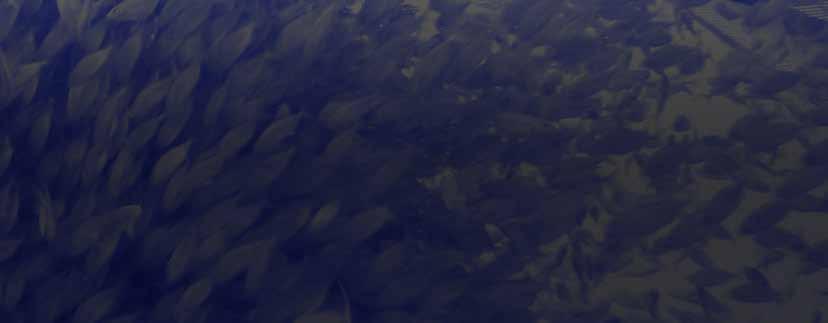
www.grand-aqua.com PROFILE: aqfeed.info/e/1628

filters
Wenger Manufacturing +1 785-284-2133 www.wenger.com PROFILE: aqfeed.info/e/1616 Yemmak +90 266 733 83 63 www.yemmak.com PROFILE: aqfeed.info/e/1617 Drum
Faivre + 33 3 81 84 01 32 www.faivre.fr PROFILE: aqfeed.info/e/1603
buckets
& conveyor components
Braime
113 246 1800
Enzymes DSM +43 2782 8030 www.dsm.com PROFILE: aqfeed.info/e/1605 Evonik +49 618 1596785 www.evonik.com PROFILE: aqfeed.info/e/1606 Equipment for sale ExtruTech Inc +1 785 284 2153 www.extru-techinc.com PROFILE: aqfeed.info/e/1618 Extruders Almex +31 575 572666 www.almex.nl PROFILE: aqfeed.info/e/1279 Buhler AG +41 71 955 11 11 www.buhlergroup.com PROFILE: aqfeed.info/e/1614 IDAH +866 39 902701 www.idah.com PROFILE: aqfeed.info/e/1615 Ottevanger +31 79 593 22 21 www.ottevanger.com PROFILE: aqfeed.info/e/1621 Wenger Manufacturing +1 785-284-2133 www.wenger.com PROFILE: aqfeed.info/e/1616
Alapala +90 212 465 60 40 www.alapala.com aqfeed.info/e/1653 Tapco Inc +1 314 739 9191 www.tapcoinc.com aqfeed.info/e/1654 Elevator
4B
+44
www.go4b.com
counters
Graders
pumps
Hammermills Dinnissen BV +31 77 467 3555 www.dinnissen.nl
Yemmak +90 266 733 83 63 www.yemmak.com PROFILE:
Yemtar +90 266 733 8550 www.yemtar.com aqfeed.info/e/1657 Moisture analysers Hydronix +44 1483 468900 www.hydronix.com PROFILE: aqfeed.info/e/1634 Packaging FAWEMA / The Packaging Group +49 22 63 716 0 www.fawema.com
aqfeed.info/e/1635 Paddle Mixer Anderson
61 | December 2022 - International Aquafeed
PROFILE: aqfeed.info/e/1633
aqfeed.info/e/1617
PROFILE:
www.andersonfeedtech.com aqfeed.info/e/1658



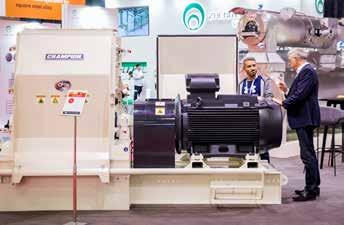




3-5 OCTOBER 2023 NEW! SÃO PAULO BRAZIL LATIN AMERICA’S LARGEST DEDICATED EVENT FOR THE ANIMAL FEED AND GRAIN PROCESSING INDUSTRIES • Animal Feed • Agua Feed • Pet food • Poultry feed • Flour milling • Grain processing, handling & storage MORE INFORMATION � NICKMOUTHAAN@VICTAM.COM � +31 6 2126 4398 � WWW.VICTAMLATAM.COM MORE INFORMATION Scan the QR code or visit victamlatam.com FOUNDING COMPANIES
Pellet mill
IDAH
+866 39 902701

www.idah.com



PROFILE: aqfeed.info/e/1615
IDAH +866 39 902701 www.idah.com
PROFILE: aqfeed.info/e/1615
PTN +31 73 54 984 72 www.ptn.nl PROFILE: aqfeed.info/e/1636

Plants
Buhler AG
+41 71 955 11 11 www.buhlergroup.com


PROFILE: aqfeed.info/e/1614
Dinnissen BV +31 77 467 3555 www.dinnissen.nl


PROFILE: aqfeed.info/e/1633
FAMSUN +86 514 87848880 www.muyang.com

PROFILE: aqfeed.info/e/1034
In this new era of global Industry 4.0 abundant agricultural production is still the cornerstone of human development. Every year, over two trillion tonnes of cereals are produced on this planet, but nearly 800 million people still lack food. As a leading enterprise in global agriculture and husbandry FAMSUN has, over the past five decades, dedicated itself to providing efficient and sustained solutions to the agriculture and husbandry sectors for safer, healthier and more environmental-friendly food across the world.
FAMSUN has always made joint efforts with global agricultural and husbandry producers. We stick with the thought of ‘Creating System Value’ in three key engineering areas of feeding, breeding and oilseed production to provide system solutions for our partners. From farm-to-table, FAMSUN has held fast to its reputed ‘Made with Wisdom’ and its sincere serving spirit, that has won the trust and support of partners in over 120 countries and regions worldwide.
To build a ‘trinity platform’ for research and development in Asia, Europe and America, FAMSUN has also built production bases in countries such as Egypt and has an established global marketing service network. The brand ‘Made in China’, can now be held up as a banner of efficiency, environmental protection and intelligent that provides credible services for global partners in both agriculture and husbandry.

Today, technical innovation has become the key driving force of FAMSUN. We have established four main research institutions; in German, in the US, in Denmark and in China, with joint ventures and cooperation agreements in five top technical companies in the USA and Spain. We focus on promoting the transformation of production, management and marketing modes and accelerate the application of Big Data, Cloud Computing and Internet of Things.

Recognition of FAMSUN value takes roots in our common responsibilities, common initiations and common benefits; the spirits of FAMSUN also originates from our joint ambitions, joint efforts and joint ventures.
As the world-leading agricultural machinery manufacturer and engineering service provider, FAMSUN now has the discourse power to set international standards and make joint efforts with developing countries. aqfeed.info/e/1034

Ottevanger
+31 79 593 22 21

www.ottevanger.com
PROFILE: aqfeed.info/e/1621
Pulverisers
Yemmak +90 266 733 83 63 www.yemmak.com PROFILE: aqfeed.info/e/1617
Yemtar +90 266 733 8550 www.yemtar.com aqfeed.info/e/1657
Zheng Chang +86 2164184200 www.zhengchang.com PROFILE: aqfeed.info/e/1623
Probiotics
Phytogenics





IDAH +866 39 902701 www.idah.com PROFILE: aqfeed.info/e/1615
DSM +43 2782 8030 www.dsm.com PROFILE: aqfeed.info/e/1605
RAS Equipment Fish Farm Feeder +34 886 317 600
system Aqua Ultraviolet +1 952 296 3480
Silos
514 85828888
TSC Silos +31
473979
PROFILE: aqfeed.info/e/1612 Vacuum Dinnissen BV +31 77 467 3555 www.dinnissen.nl PROFILE: aqfeed.info/e/1633 Yemmak +90 266 733 83 63 www.yemmak.com PROFILE: aqfeed.info/e/1617 Weighing equipment Ottevanger +31 79 593 22 21 www.ottevanger.com PROFILE: aqfeed.info/e/1621 Yemmak +90 266 733 83 63 www.yemmak.com PROFILE:
Yeast products
GmbH +49 5461 93030 www.leibergmbh.de
aqfeed.info/e/1640
(Lesaffre animal care) +33 3 20 81 61 00 www.lesaffre.fr
aqfeed.info/e/1629 For more information about our market place - please view or download our 2023 media kit https://aqfeed.info/e/1529 May your Christmas season be filled with peace and joy! Thank you for your continued patronage. Sending you wishes for a healthy, happy and prosperous Christmas and New Year. - from all of the International Aquafeed team 63 | December 2022 - International Aquafeed
Delacon +43 732 640 531 414 www.delacon.com PROFILE: aqfeed.info/e/1637
www.fishfarmfeeder.com PROFILE: aqfeed.info/e/1638 RAS
www.aquauv.com PROFILE: aqfeed.info/e/1639
FAMSUN +86
www.famsungroup.com PROFILE: aqfeed.info/e/1034
543
www.tsc-silos.com
aqfeed.info/e/1617
Leiber
PROFILE:
Phileo
PROFILE:
the interview
Professor Addison Lee Lawrence
Professor Addison Lawrence, who founded modern-day aquaculture, passed away on October 14, 2022. It was a privilege for IAF to ask him questions at Aquaculture America in Las Vegas in February 2018 and we re-publish his interview in the final edition of the year as a tribute to Prof Lawrence.
Professor Lawrence, worked at several universities with most of his time spent at Texas A&M University – from which he retired in 2015. After 38 year’s service he retired as a Regent Fellow, Senior Faculty Fellow, Project Leader and Scientistin-Charge for Texas A&M Agrilife Research, and as a member of the Department of Wildlife and Fisheries Sciences and Intercollegiate Faculty of Nutrition. He played a pivotal role in developing and constructing a new, state-of-the-art shrimp research facility and pilot demonstration plant at the Ralco Technology Campus in Balaton, Minnesota after retiring in March 2015. That facility was created to commercialise the patented technology that was developed at the Shrimp Mariculture Laboratory at Texas A&M University in Port Aransas, Texas.
20 years to achieve a new commercial strain of cattle while shrimp can achieve the same in one year.
In the early 1960s, when I was considering what I would like to do, aquaculture was like ‘Star Trek’ – it was not on my radar. Space and the oceans they were frontiers. Space was out of the question, so I chose oceans.
I preferred marine over freshwater. A lot less was known about marine. It was an excitement, going to places and doing things we didn’t know about. We had very little information about shrimp farming or aquaculture at that time.
I got my PhD at the University of Missouri and a fellowship at Hopkins Marine Station at Stanford University and that did it for me; that cemented my interest in oceans and the life in it. Two years post-doctorate and lecturing at Stanford confirmed what I wanted to do with my life.
Why shrimp?
I wasn’t thinking aquaculture at that time in the early 1960s; however, when I went from California to the University of Houston to my surprise the diversity of marine life on the Gulf of Mexico Galveston coast was much more limited. Of my choices I selected shrimp to study because of its interesting lifecycle and its role and importance in the ecosystem.
At that time the old National Marine Fisheries Service at Galveston, Texas had a major shrimp research program and thus shrimp were readily available free of cost for my research. It was working with natural shrimp species and the Galveston research program is why I got interested in farming shrimp – that was in 1963-64. From there it just blossomed. When I look back on it, initially I was just interested in shrimp and didn’t dream it would become one of the most important species to be farmed today.
What do you think are reasons shrimp farming has done so well?
There are multiple reasons why shrimp have become such a popular farmed aquatic food, and not least is that it is delectable. As it turns out shrimp represents a low food conversion ratio, short crop times, high fecundity, etc. better than that of chicken.
You could create a new commercial strain of shrimp every year through genetics given that a single female less than six months old can spawn over two million eggs per month. That’s very high fecundity. It might take 15-
In your view what are other important aspects of shrimp farming?
We know that shrimp can grow six grammes a week since this growth is achieved in their natural environment. Therefore, all we need to do is achieve that growth under farming conditions. It is the short production crop time from the nursery phase to harvest of only two to six weeks with production levels of 500,000 to 2,000,000 kg per square meter footprint of water per year that makes shrimp farming so desirable.
Shrimp farming industry has the potential of being bigger than chicken farming in the future. The commodity price for shrimp has the potential of being cheaper than chicken in the future.
If that is so, what role will shrimp play in our dietary future?
My dream is to see shrimp as the chicken of the sea. We are the third rock from the sun with a growing human population. Shrimp is one of the best animal protein sources we have to produce the protein in the volumes needed to keep up with population growth. We will be eating more shrimp in the future.
Disease is a challenge. Presently, shrimp farming uses open systems (ponds) and is experiencing a new catastrophic disease every one to four years. Controlling disease in enclosed and bio-secure facilities is the only sustainable, long-term, environmental solution. Also, we have to get away from coastal farming. We must go inland. I visualise every city in the world will have an associated shrimp production system.
But how much shrimp can these farming systems produce? Will they meet the demand of cities?
Shrimp production must be sustainable and carried out inside buildings that are bio-secure and alongside cities with minimum production levels of one million kg per ha footprint of water per year. This will minimise land use, reduce the need for transportation and provide up to two million kg of shrimp per ha footprint of water per year in a standard system – especially in one that is stacked up to eight raceways high.
That’s the future I predict for shrimp farming.
When did you first become interested in shrimp and fish farming?
64 | December 2022 - International Aquafeed

International Aquafeed - December 2022 | 65
THE INDUSTRY FACES
Royal Greenland appoints new CEO

From February 2023, Susanne Arfelt Rajamand will head Royal Greenland A/S. After 15 years in the Asian business community, Susanne Arfelt Rajamand has agreed to become the new CEO of Royal Greenland. She comes from a position as Managing Director of the dairy giant Fonterra’s division in Southeast Asia, an organisation with more than 2,500 employees.
Ms Arfelt Rajamand has previously had a solid career with the Unilever consumer goods giant, where she started as a trainee and rose to Managing Director in Singapore.
Following Unilever, Ms Arfelt Rajamand joined American food company McCormick & Company, where she was responsible for the ingredients business in Asia (excluding China) and the Pacific region, including four factories and four joint ventures, with over 800 employees.
In 2020, she was given even greater responsibility by the New Zealand dairy giant Fonterra, with responsibility for all retail and foodservice sales in Southeast Asia, including responsibility for four factories and an organisation totalling more than 2,500 employees.


Ms Arfelt Rajamad holds an MSc in Business Economics from Copenhagen Business School and has completed an Executive MBA from Tsinghua University in Beijing and INSEAD.
SalMar appoints Ulrik Steinvik as new Chief Financial Officer

SalMar has appointed Ulrik Steinvik as the company’s new Chief Financial Officer (CFO) effective today. Steinvik has been in SalMar since 2006 and has held several leading positions in the executive management where he has been Director of Business Improvement the latest years.
Before Steinvik joined SalMar, he served with Arthur Andersen Norway and Ernst & Young from 1998 to 2006. He graduated from the Norwegian School of Economics and Business in 2002 and holds the title as Norwegian state authorised public accountant.
Ulrik Steinvik replaces Gunnar Nielsen, who handed in his resignation in September.
Angeline Tse joins Skretting as Global Brand and Communications Manager
Skretting is thrilled to welcome Angeline Tse as its new Global Brand and Communications Manager.
With more than 10 years’ branding, marketing and journalism experience from the media, oil and gas and tech industries, Ms Tse brings valuable experience to the team. She has previously written for publications such as Jetstar Asia, The Peak Singapore, and Elle Singapore.
Ms Tse joined Skretting on 1 November and will start her maternity leave in December. Jorge Díaz, Global Sustainability Manager, has been appointed as interim Manager for the Global Communications Team until her return.
Cargill appoints Brian Sikes as President and Chief Executive Officer
Cargill has announced Brian Sikes has been elected President and Chief Executive Officer (CEO), effective January 1, 2023.
Mr Sikes will be the 10th CEO in Cargill's 157-year history and brings a strong track record of business operational rigor to the role, having grown the company's global Protein and Salt enterprise into an industry leader. Mr Sikes currently serves as Cargill's Chief Operating Officer (COO), where he has been instrumental in constructing the company's long-term strategy. With broad experience across multiple businesses, cycles and geographies, Mr Sikes held leadership roles in the U.S., Canada and Europe, and served as the head of the company's Talent Center of Expertise. His relentless focus on people and culture, customers, and proven expertise in leading growth and transformation have earned him the trust and respect of Cargill's customers, employees and the Board.
Mr Sikes will succeed Mr MacLennan, who joined the company in 1991 and served in multiple executive roles, including CFO and COO, before becoming the company's Chairman and CEO in 2013.


66 | December 2022 - International Aquafeed



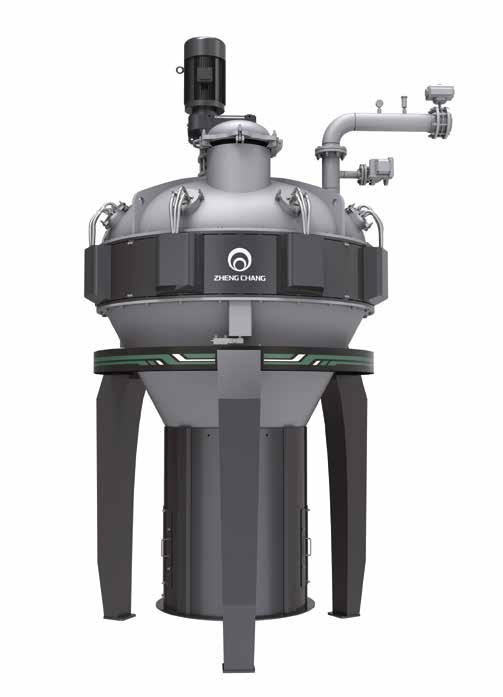
Official Website Facebook ZhengChang Group : No.28 Zhengchang Road, Kunlun Development Zone, Liyang, Jiangsu, China : +86 21-6418 4200 Fax : +86 21-6416 3299 : International@zhengchang.com : www.zhengchang.com/eng Address Telephone E-mail Website Vertical Vacuum Spraying Machine SZPL Series Remark: Optional Powder Spray System Optional CIP (Clean In Place) Particle Diameter Model 1~30mm SZPL 2000,3000,5000 Liquid Addition Spray Uniformity Residual rate 1~36% Cv≤7% ≤0.5% Batch Working Time 5~7min Maximum Vacuum Vacuum Retention 40mbar ≤100mbar/5min








































































































































 by Philippe TACON, Director Business Development Animal Health, Adare Biome, France
by Philippe TACON, Director Business Development Animal Health, Adare Biome, France






















 by Thomas Marriot, Features Editor, Peregrine Livefoods
by Thomas Marriot, Features Editor, Peregrine Livefoods






























 By François Jégou, Aquaculture Technical Manager, ADM Animal Nutrition
By François Jégou, Aquaculture Technical Manager, ADM Animal Nutrition























































































